Forums
- Forums
- Duggy's Reference Hangar
- USAAF / USN Library
- LOCKHEED XFV-1 / CONVAIR XFY-1
LOCKHEED XFV-1 / CONVAIR XFY-1
Post a reply
- Go to Previous topic
- Go to Next topic
- Go to Welcome
- Go to Introduce Yourself
- Go to General Discussion
- Go to Screenshots, Images and Videos
- Go to Off topic
- Go to Works in Progress
- Go to Skinning Tips / Tutorials
- Go to Skin Requests
- Go to IJAAF Library
- Go to Luftwaffe Library
- Go to RAF Library
- Go to USAAF / USN Library
- Go to Misc Library
- Go to The Ops Room
- Go to Made in Germany
- Go to Campaigns and Missions
- Go to Works in Progress
- Go to Juri's Air-Raid Shelter
- Go to Campaigns and Missions
- Go to Works in Progress
- Go to Skinpacks
- Go to External Projects Discussion
- Go to Books & Resources
-
8 years agoSun Jan 02 2022, 06:08amDuggy
 Main AdminText by Greg Goebel Thanks.
Main AdminText by Greg Goebel Thanks.
THE GERMAN POGOS
The idea of the "flying pogo" -- an aircraft that took off and landed standing vertically on its tail -- goes back to World War II at least. As the war tilted ever more painfully against the Nazis, the Germans found the skies over the Reich increasingly dominated by Allied air power, with airfields bombed and shot up on a regular basis. Obviously, it might be nice to have combat aircraft that could take off and land anywhere.
In late 1944, Heinkel engineers working in Vienna drew up a design for the "Wespe (Wasp)", a pogo interceptor with a length of 6.2 meters (20 feet 4 inches), a tripod tail arrangement with wheels on the tips of the fins, and a "annular" (ring) wing with small auxiliary flat wing stubs and the prop rotating inside the wing. The Wespe was to be powered by the Heinkel S021 turboprop, a derivative of the Heinkel S011 turbojet, and was to be armed with twin MK 108 30 millimeter cannon. Top speed was estimated at almost 800 KPH (500 MPH).
The Wespe was a lost cause from the outset: the He S011 turbojet never reached production, and as it would be learned later, getting turboprops to work was not as easy as jet engine pioneers assumed early on. In early 1945, work moved on to a new design, the "Lerche (Skylark)", which had the same armament and general configuration as the Wespe but was instead powered by twin Daimler-Benz DB605D water-cooled inline vee engines mounted in tandem in the fuselage and driving contra-rotating props inside the annular wing.
Another difference from the Wespe was that the pilot lay prone in the Lerche instead of sitting in a seat -- which meant the pilot stood straight up when taking off or landing, allowing him to look down and around more easily. The Lerche was also somewhat bigger, with a length of 9.4 meters (30 feet 10 inches) but could still attain 800 KPH (500 MPH), at least on paper. The design of the Lerche reached the point where a prototype could have been built -- but given the desperation of the German Reich's circumstances in the spring of 1945, there was no way it could have happened.
* The Wespe and Lerche were imaginative, but they were still not quite in the same league as another pogo concept developed by the Focke-Wulf company, the "Triebfl?gel (Powered Wing)". The Triebfl?gel featured three straight wings mounted on a rotating ring in the aircraft's midsection, with each wing tipped by a Pabst ramjet; various booster schemes were considered to get the rotating wing up to speed so the ramjets would start. The pilot could rotate the wings so that the ramjets were pointed almost level to the plane of rotation of the wings, in principle allowing the aircraft to hover, or pivot the ramjets forward to provide thrust for forward flight.
Focke-Wulf began development of the Triebfl?gel in September 1944. Projected speed was 1,000 KPH (620 MPH), with a rate of climb of 7,620 meters (25,000 feet) per minute, and the aircraft was to have been armed with two MG 151 20 millimeter cannon and two MK 103 30 millimeter cannon. A wind tunnel model and the ramjets were tested, but no Triebfl?gel prototype was ever completed. It is something of a pity that it was never built, not because it seems to have been a bright idea -- it more suggests the inclination of German engineering to be too clever for its own good -- but because it leaves the question unanswered as to whether it could have ever actually been made to work.
The Germans never had a chance to prove the pogo concept, but in the postwar period, work continued on the idea. The US Navy became interested in the concept of operating aircraft off of small vessels instead of aircraft carriers, and in 1950 the service began a competition to obtain VTOL demonstrators to evaluate the concept. Convair, Goodyear, Lockheed, Martin, and Northrop all submitted designs; two finalists were selected to build prototypes, with Lockheed to provide the "XFV-1", and Convair to provide the "XFY-1".
Lockheed XFV-1
The Lockheed XFV-1 was the first to take to the air. It was a cigar-shaped aircraft with straight, tapered wings, plus an "X" arrangement tail, the four tailfins being at 45 degree angles relative to the wings, with small wheels on each of the four tailfins. It was powered by an Allison T40 turboprop, which was a "twinpack" engine consisting of two T38 turboprop engines coupled together to drive a Curtiss Electric contra-rotating propeller system, featuring three paddle blades on each of the two prop stages. The pilot sat on an ejection seat that could tilt forward to provide a better view in vertical takeoffs and landings. Control in vertical flight was by the control surfaces on the tailfin; the 45-degree configuration was to prevent the tailfins from being aerodynamically masked by the wings. The aircraft was nicknamed the "Salmon", after Lockheed test pilot Herman Salmon.
The demonstrator was not armed; planned armament consisted of a pod on each wingtip with twin 20 millimeter cannon, for a total of four cannon. It appears the unusual wingtip armament scheme was driven by the impracticality of developing synchronizing gear to allow the cannon to fire through the contrarotating prop assembly. Wingtip pods carrying a total of 48 unguided rockets were also considered as alternate armament. A special trolley was developed to allow the Salmon to be carted around on the ground. The trolley could set the aircraft to the vertical position for a takeoff and then, mission complete, tilt it back on the level again.
However, for test flights the XFV-1 was fitted with fixed landing gear for conventional horizontal takeoffs, since nobody thought it wise to try to take off and land vertically until the aircraft had been thoroughly evaluated. Besides, the aircraft's XT40-A-6 engine, which provided 4,365 kW (5,850 SHP) takeoff power, didn't provide enough power to support the weight of the XFV-1 in straight-up flight. The intent was to later update the aircraft to the XT40-A-16 variant, with 5,090 kW (6,825 SHP), for full flight tests.
Initial flight was in March 1954, with a total of 27 flights performed in that year. By the fall of 1954, the Salmon was performing horizontal-to-vertical transitions in flight and the reverse at altitudes above about 300 meters (1,000 feet). The transitions could be performed, but once the XFV-1 was flying vertically it was almost impossible to control, tending to stagger around drunkenly while the pilot barely knew if he was rising or falling; a radar altimeter could have helped determine altitude, but it was difficult to make one of sufficient accuracy and light weight. The reliability of the T-40 engine system and the electrically-actuated contraprop system also left something to be desired.
Lockheed's Clarence "Kelly" Johnson had been enthusiastic about the pogo concept at first, but gradually came to see it as a bad notion, calling it "the only airplane we ever built which we were afraid to fly ourselves in the final tests." More engine power would have done little to address the controllability issues, and the thought of landing such an aircraft on a ship on the open seas was clearly absurd. Nobody ever tried to take off or land vertically in the XFV-1.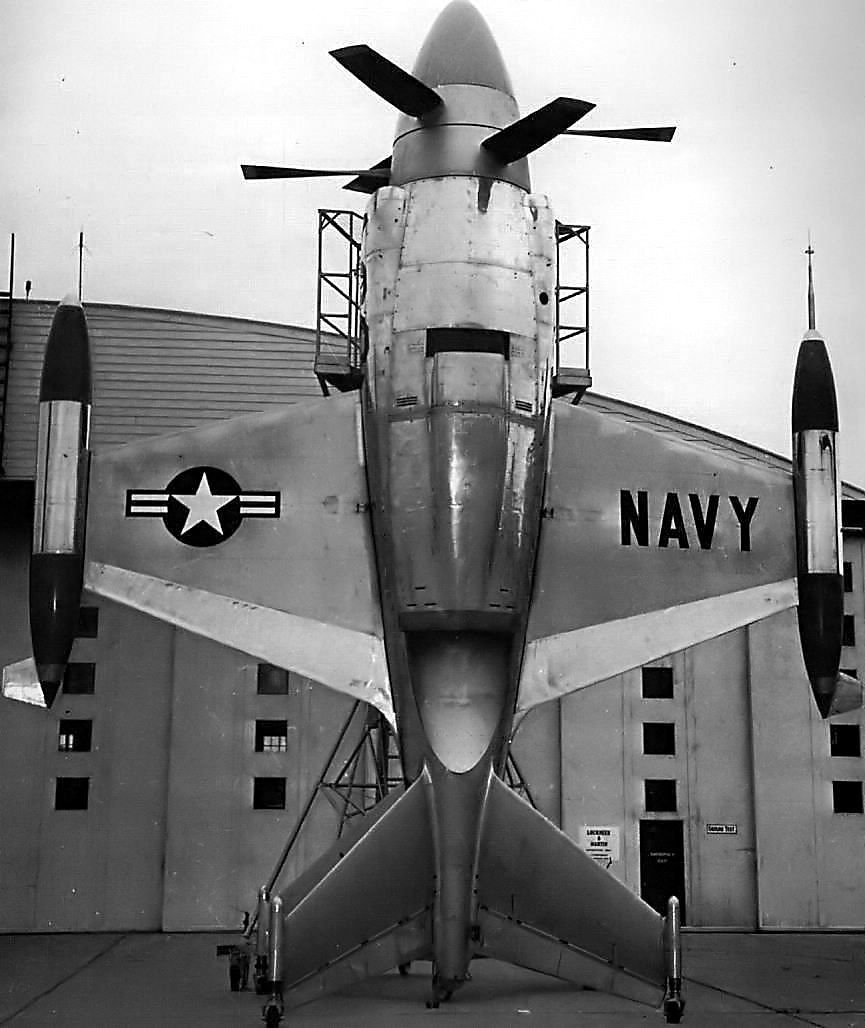


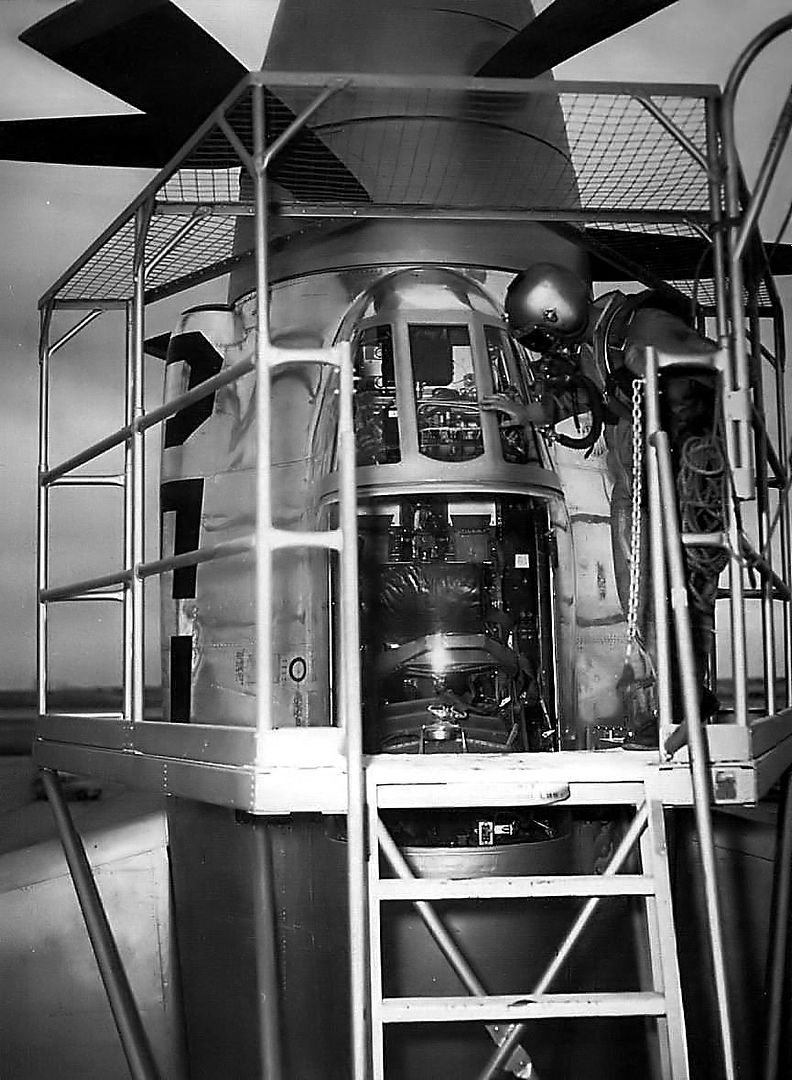
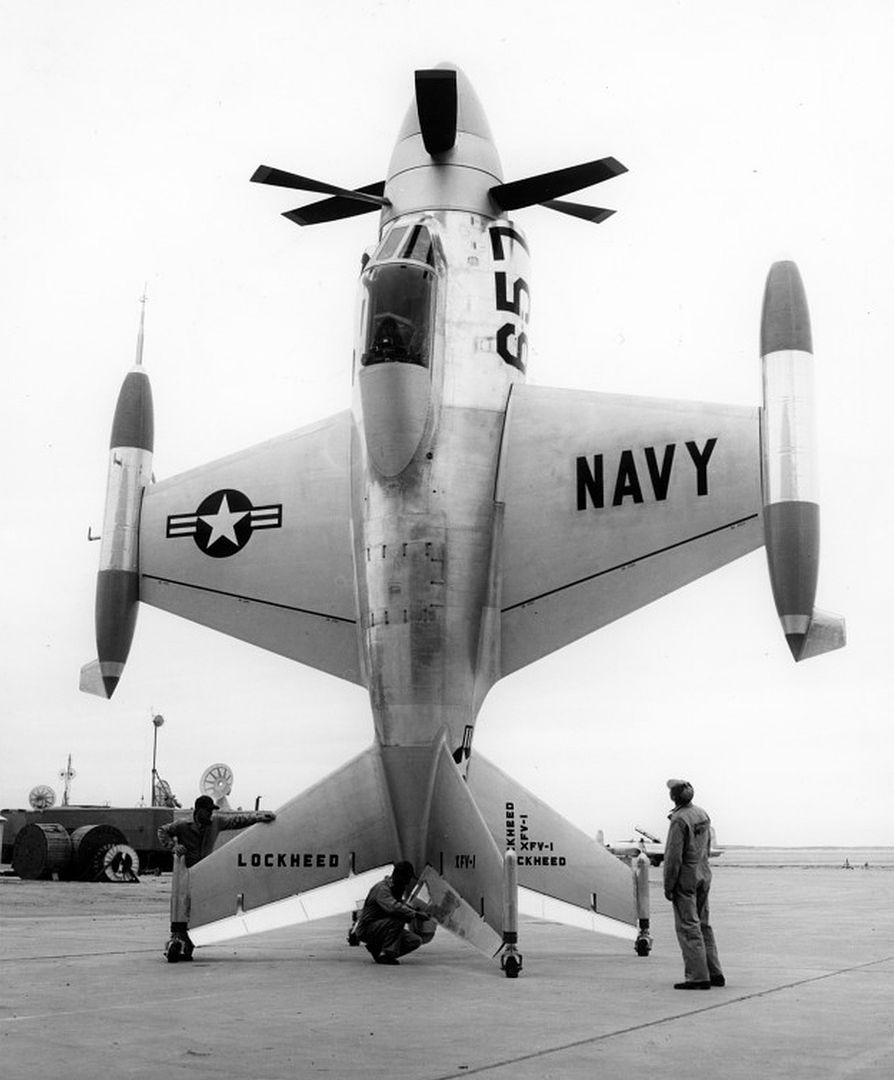
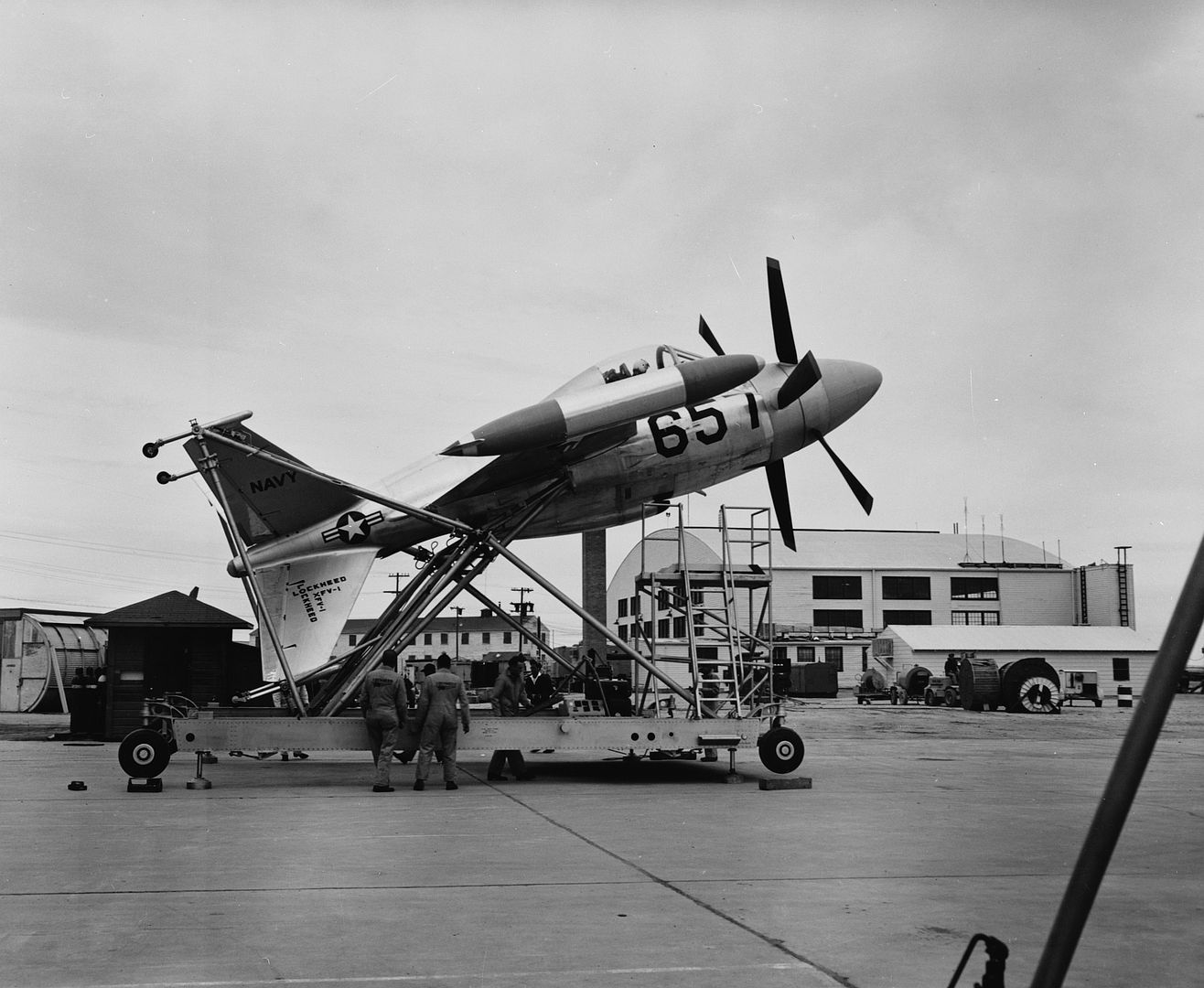

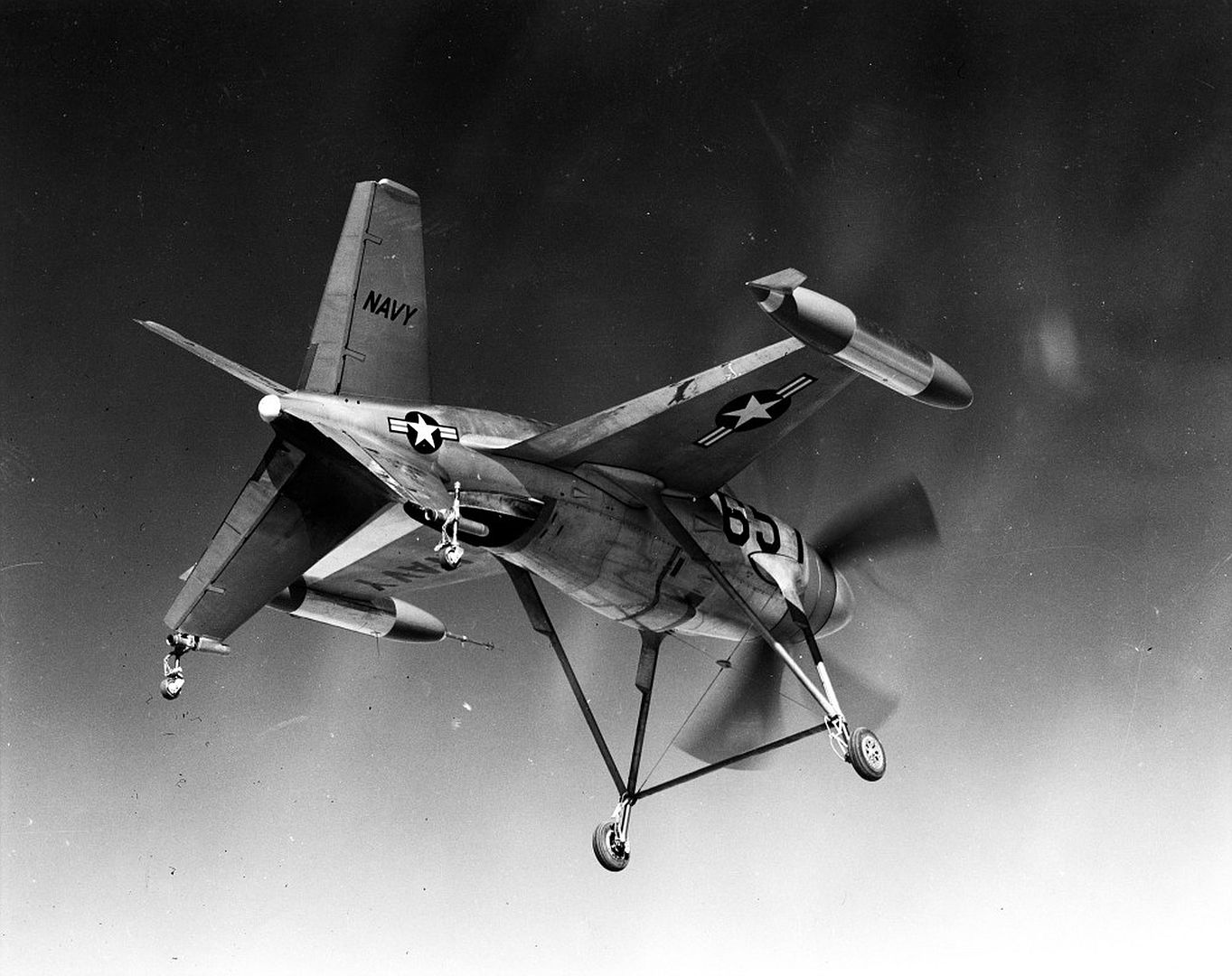
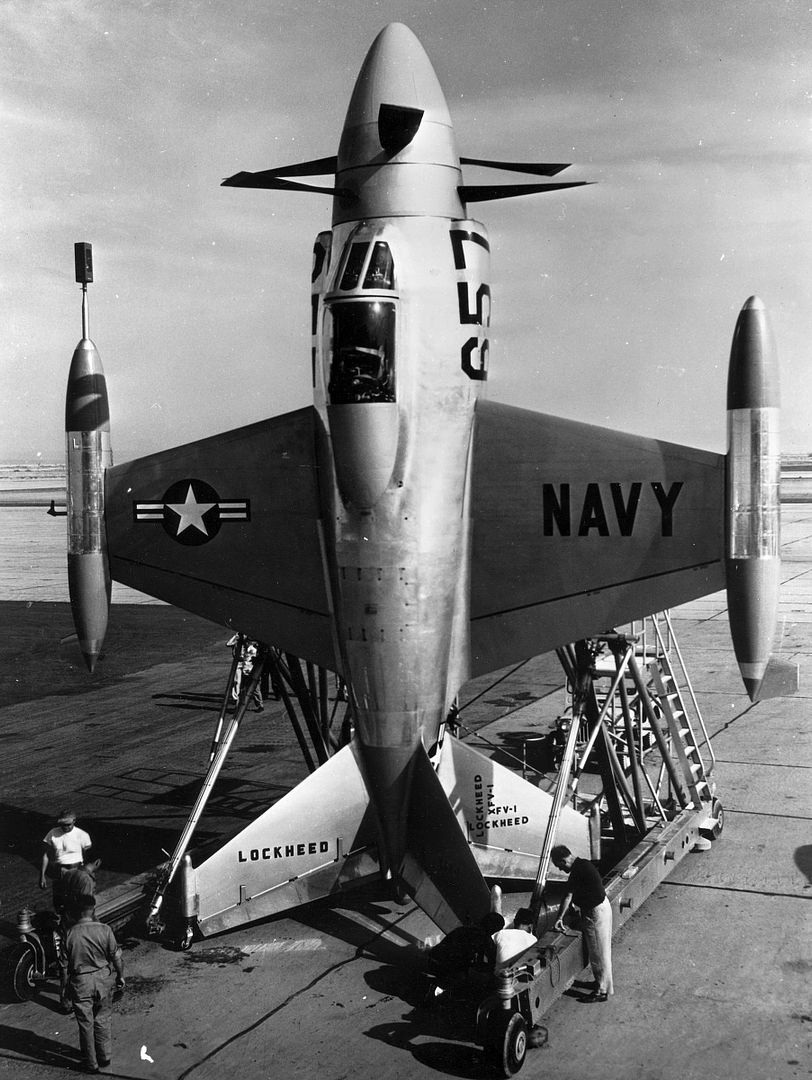

LOCKHEED XFV-1 (PROJECTED SPECIFICATIONS)
_____________________ _________________ _______________________
spec metric english
_____________________ _________________ _______________________
wingspan 8.36 meters 27 feet 5 inches
wing area 22.85 sq_meters 246 sq_feet
length 11.23 meters 36 feet 10 inches
empty weight 5,260 kilograms 11,600 pounds
MTO weight 7,360 kilograms 16,220 pounds
max speed at altitude 935 KPH 580 MPH / 505 KT
service ceiling 13,100 meters 43,300 feet
endurance 80 minutes
Convair XFY-1
The Convair XFY-1 was also powered by the XT40-A-16 twinpack engine and had a contrarotating prop with three blades on each stage. It had a distinctly different configuration, with delta wings and both dorsal and ventral tailfins, with small caster wheels sticking out from the ends. As in the XFV-1, the Convair's pilot seat could tilt forward, and armament was to be four 20 millimeter cannon or 48 unguided rockets in wingtip pods.
A special trolley was built to haul the XFY-1 around. The ventral tailfin was trimmed at the tip, apparently to ease ground handling; it could also in principle be jettisoned to permit a belly landing. However, the ventral fin meant that the XFY-1 couldn't take off horizontally as a normal practice, and so the test flights had to feature vertical takeoffs and landings from the beginning. That was seen as risky, so initial test flights were performed on a tether winched from the roof of the huge blimp hangar at Moffett Field in the San Francisco Bay Area. These initial tethered flights, performed by test pilot James F. "Skeets" Coleman, began in April 1954. The blimp shed was far from an optimum trials environment, since the confined downwash created turbulence and kicked up dust and debris; noise levels were deafening as well. If Coleman became insecure, he could cut the engine and tell the winch operator: "Catch me!"
Happily, Coleman didn't kill himself, and he made the first free flight -- a hop up and back down again -- on 1 August 1954. After extending the envelope, on 2 November 1954 Coleman performed what has been described as the first VTOL flight in history, taking off vertically, flying around horizontally, and then landing vertically. Nitpickers may argue over whether it was really was the first, but it was enough to win Coleman the Harmon Trophy.
Landing vertically was of course an extreme challenge, with Coleman assisted by ground observers watching his progress and reporting his altitude. Coleman actually thought it would be relatively straightforward if he were given prone accommodations -- landing while standing up and looking down, not over his shoulder -- but the final judgement was that it wouldn't be worth the bother to try it out.
Another test pilot, Johnny Knebel, also took a shot at flying the XFY-1, relying on a briefing from Coleman and not bothering with tethered flights; apparently Knebel's flight was interesting if hair-raising to watch, demonstrating that it wasn't a good idea to skip the tethered flights after all. Much later, when Knebel asked if he thought it was a distinction to have flown the XFY-1, he replied: "Yeah, it was a tribute to my stupidity in attempting it."
It didn't take long to realize that as it stood, the naval pogo fighter concept was a bust. Even if the takeoff/landing scheme had been workable, the brute-force approach demanded a big engine in a minimally light airframe, and the result was poor payload and minimal fuel capacity. The XFY-1 effort was canceled along with the XFV-1 in 1955. Apparently the program had envisioned multiple prototypes of both aircraft, but only one was built of each; both survive as museum displays.
CONVAIR XFY-1 (PROJECTED SPECIFICATIONS)
_____________________ _________________ _______________________
spec metric english
_____________________ _________________ _______________________
wingspan 8.43 meters 27 feet 8 inches
wing area 32.98 sq_meters 355 sq_feet
span over tailfins 8.43 meters 27 feet 8 inches
length 6.98 meters 22 feet 11 inches
empty weight 5,325 kilograms 11,740 pounds
MTO weight 7,370 kilograms 16,250 pounds
max speed at altitude 980 KPH 610 MPH / 530 KT
service ceiling 13,300 meters 43,600 feet
range 540 kilometers 400 MI / 350 NMI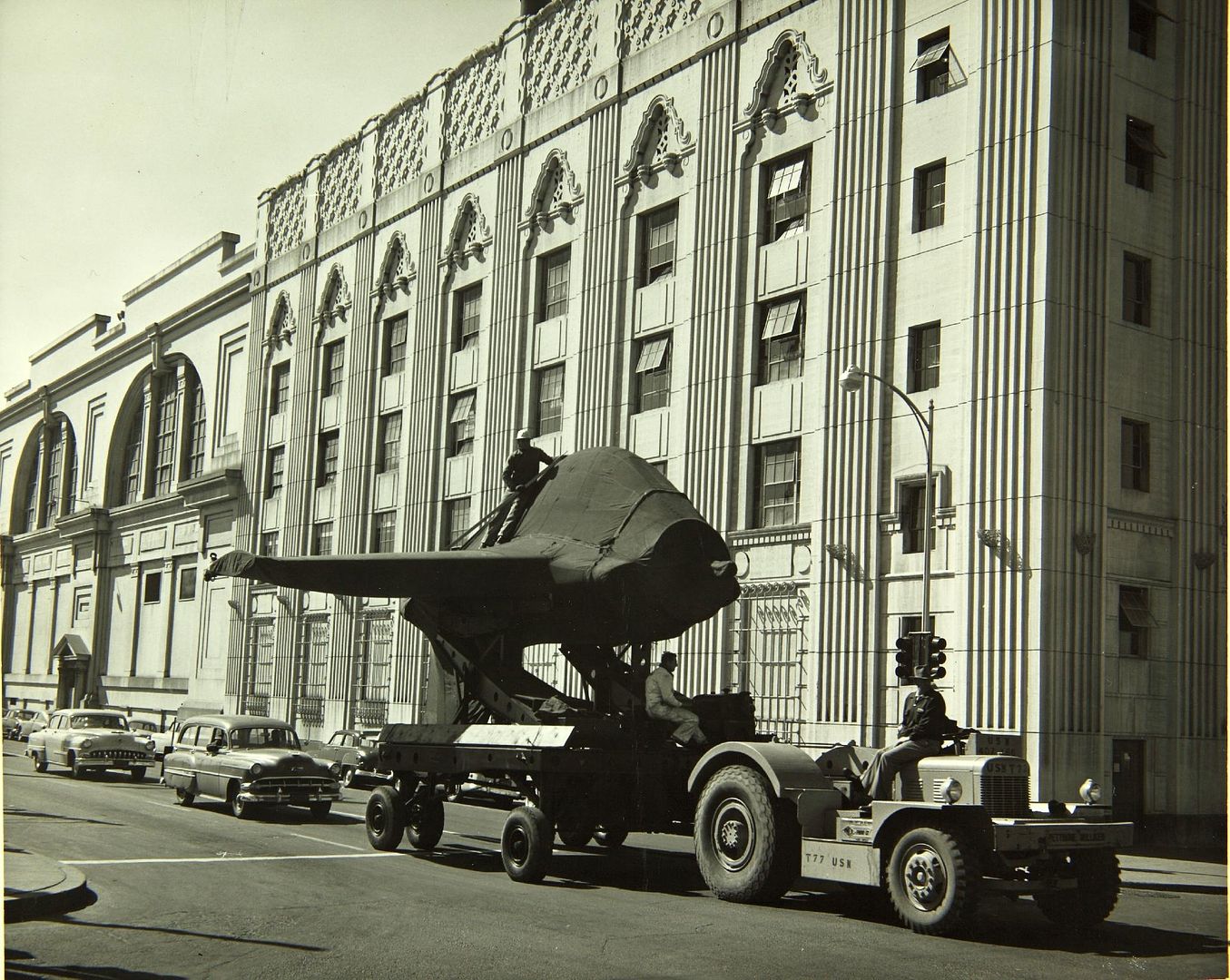
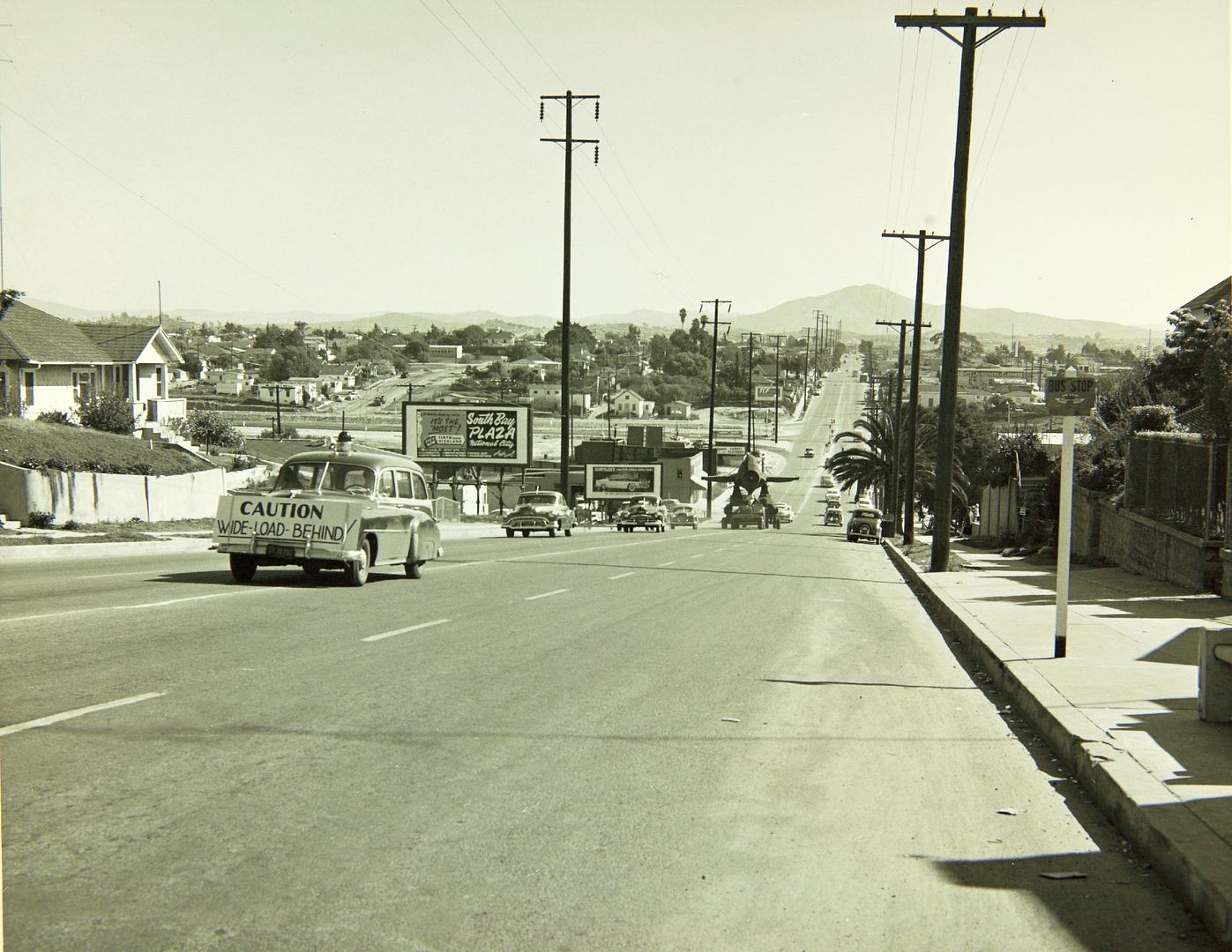
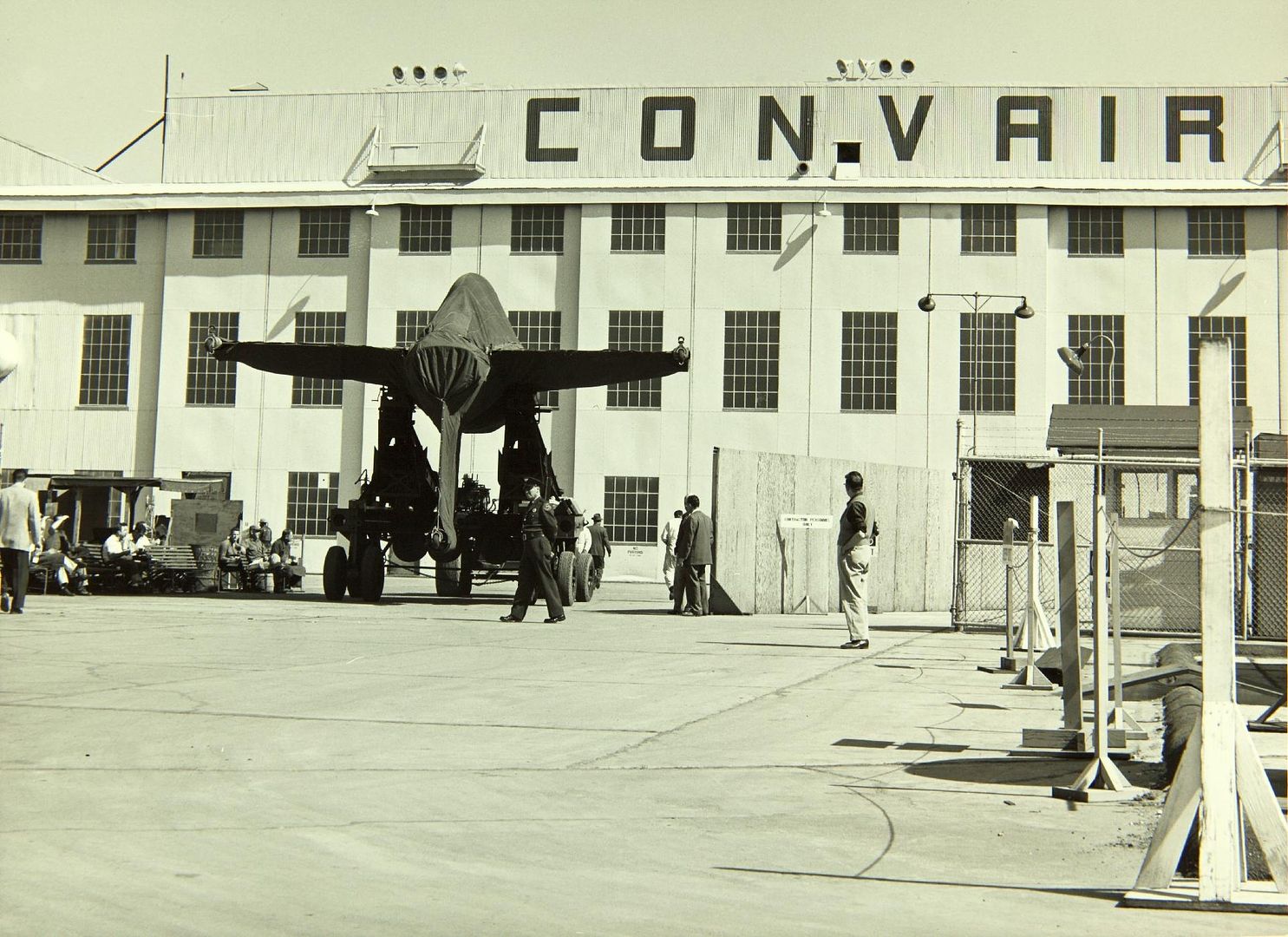

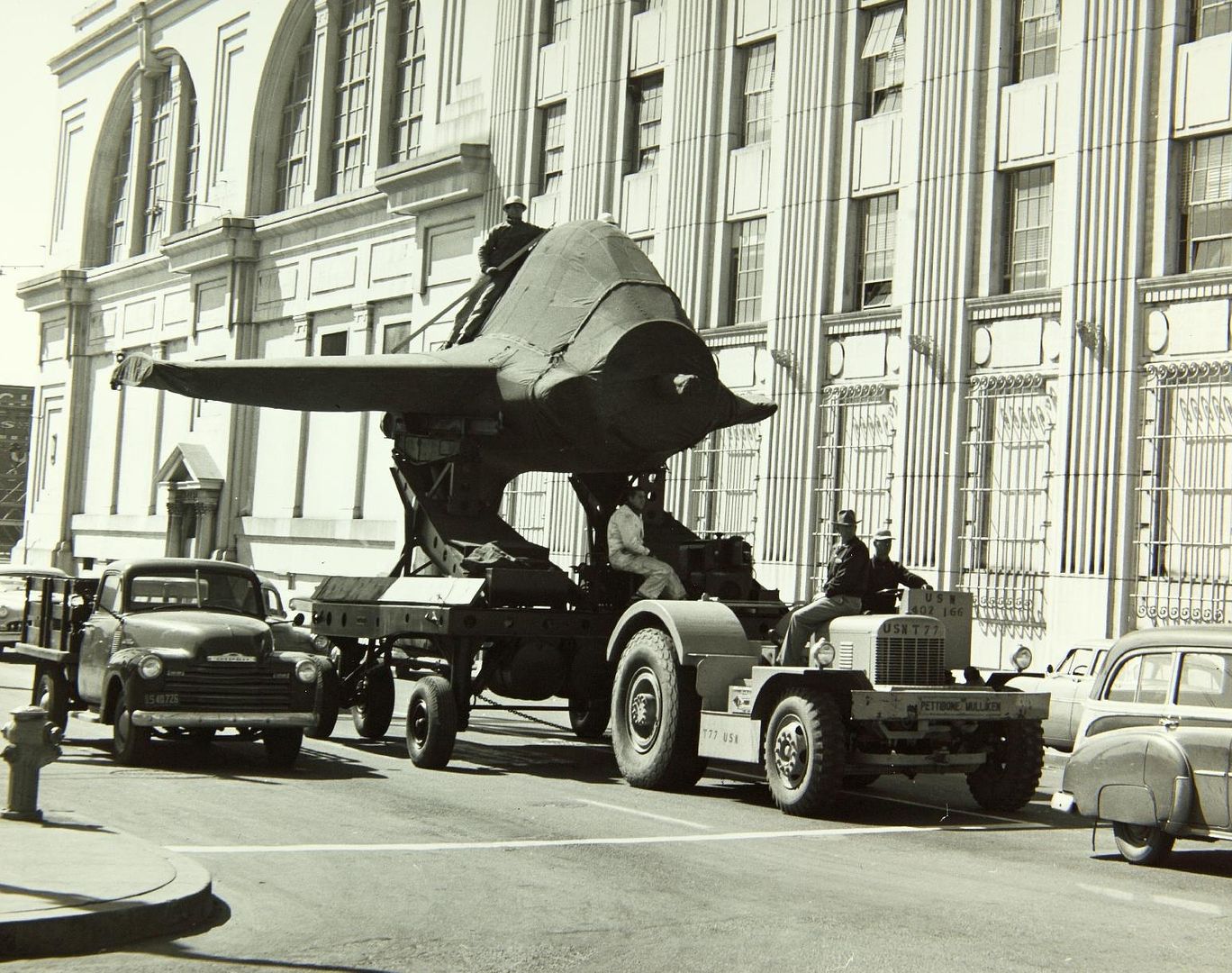
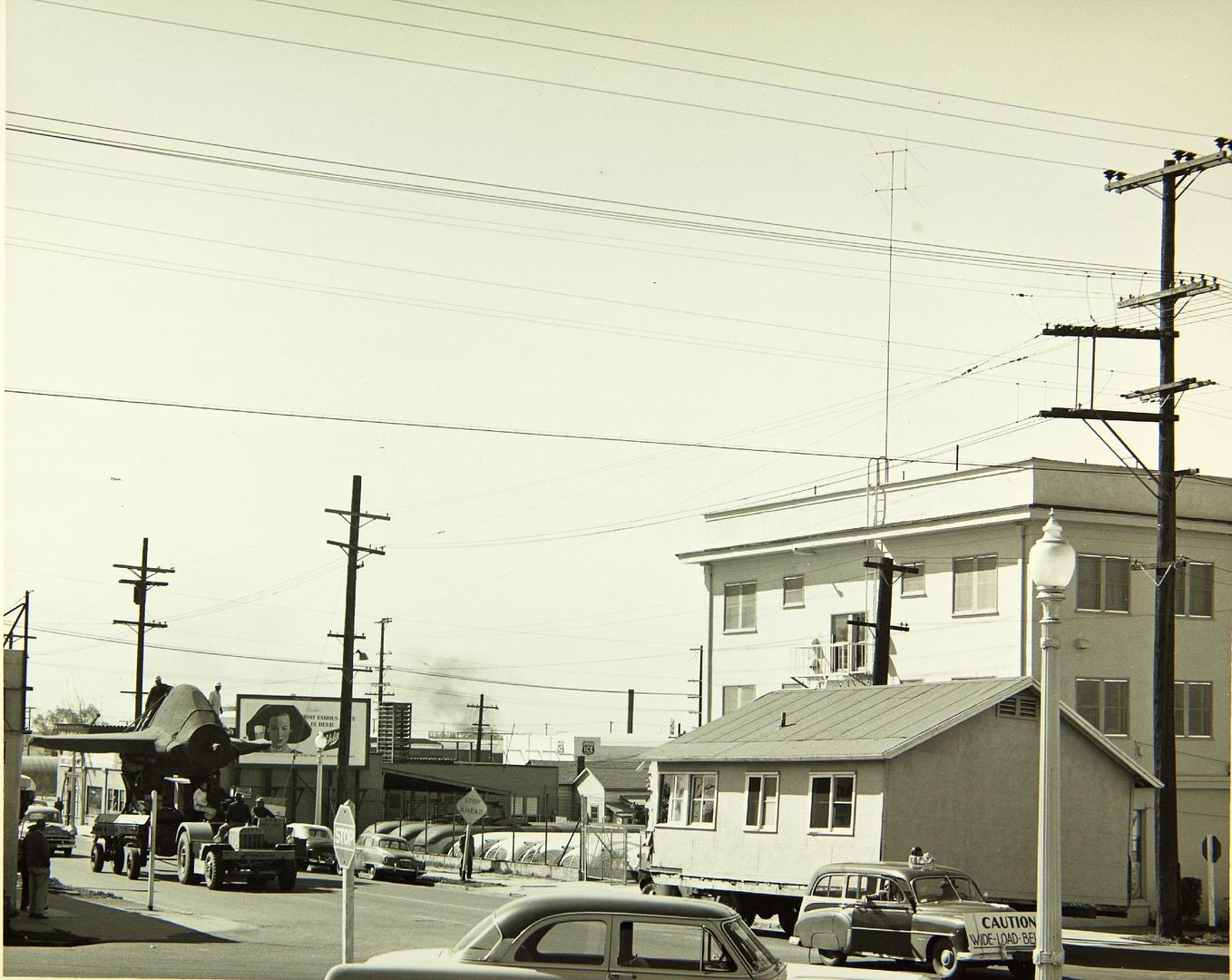

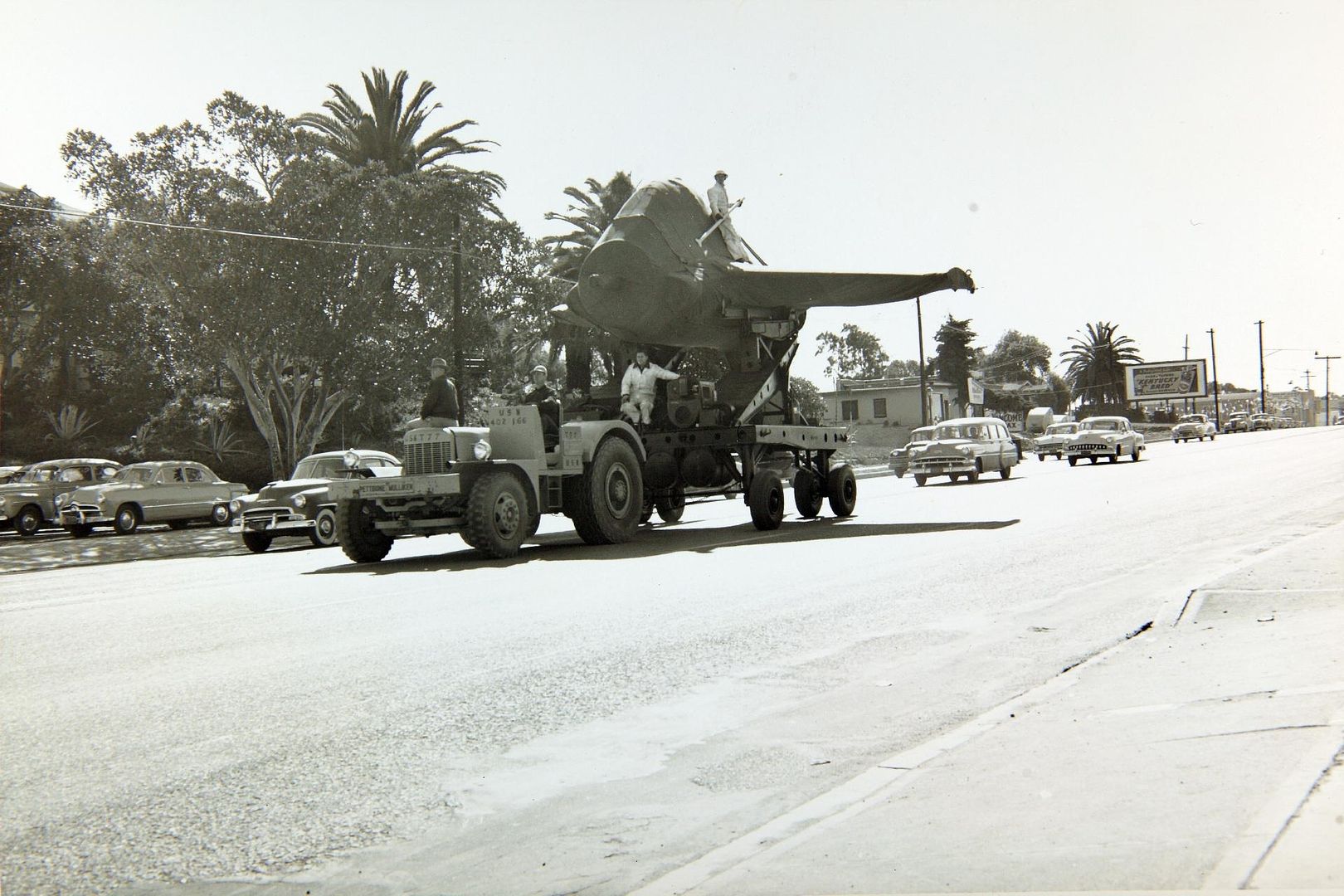
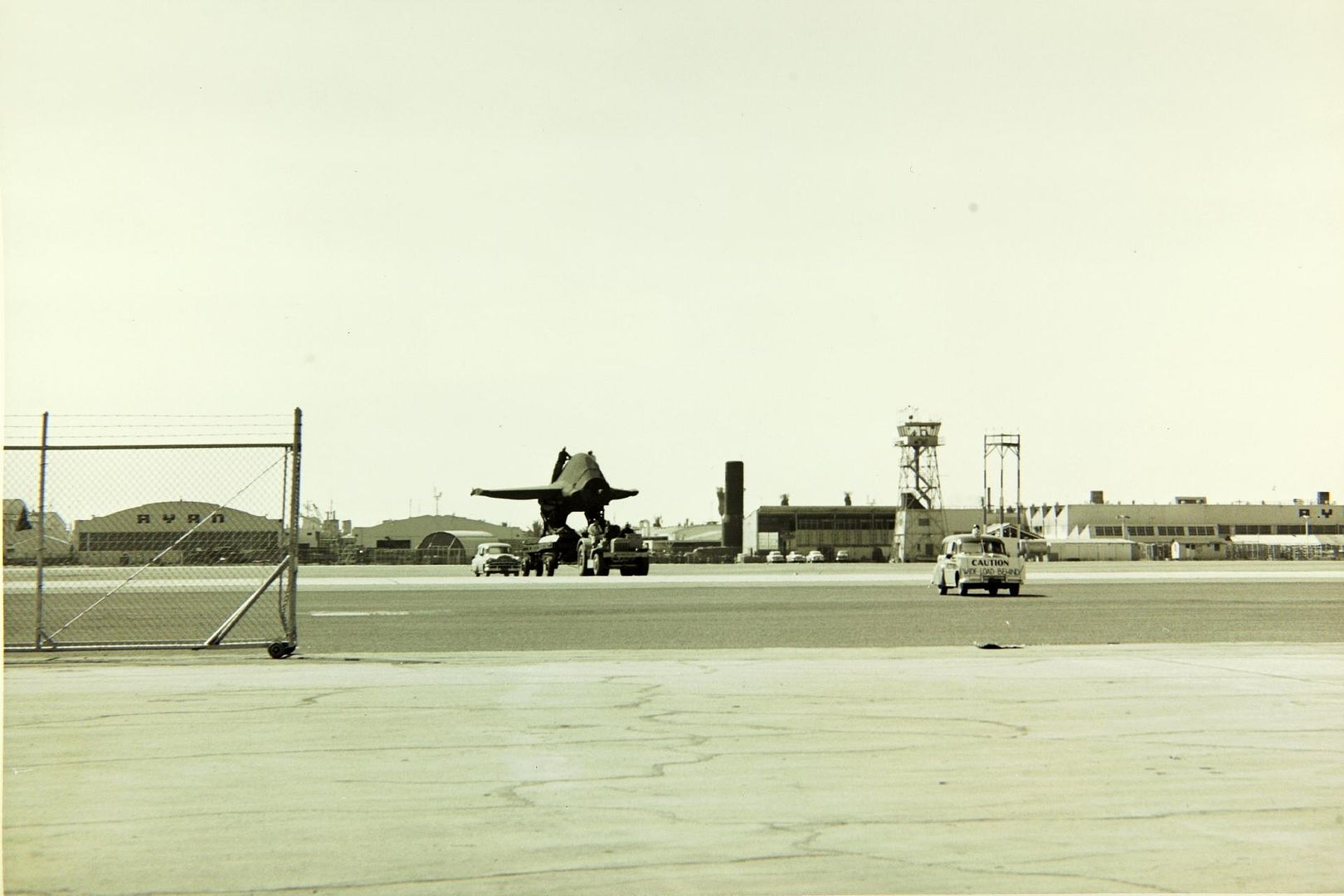
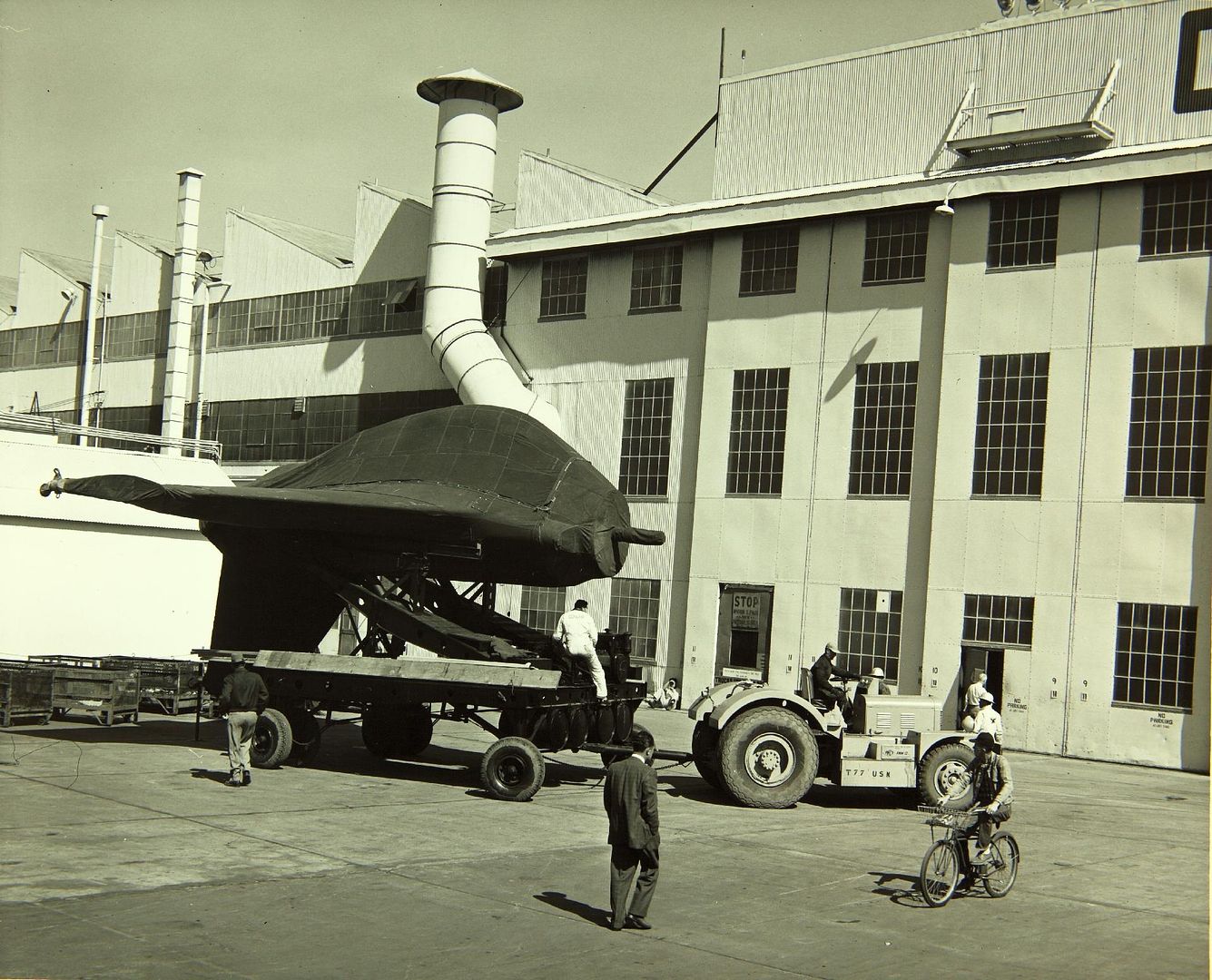
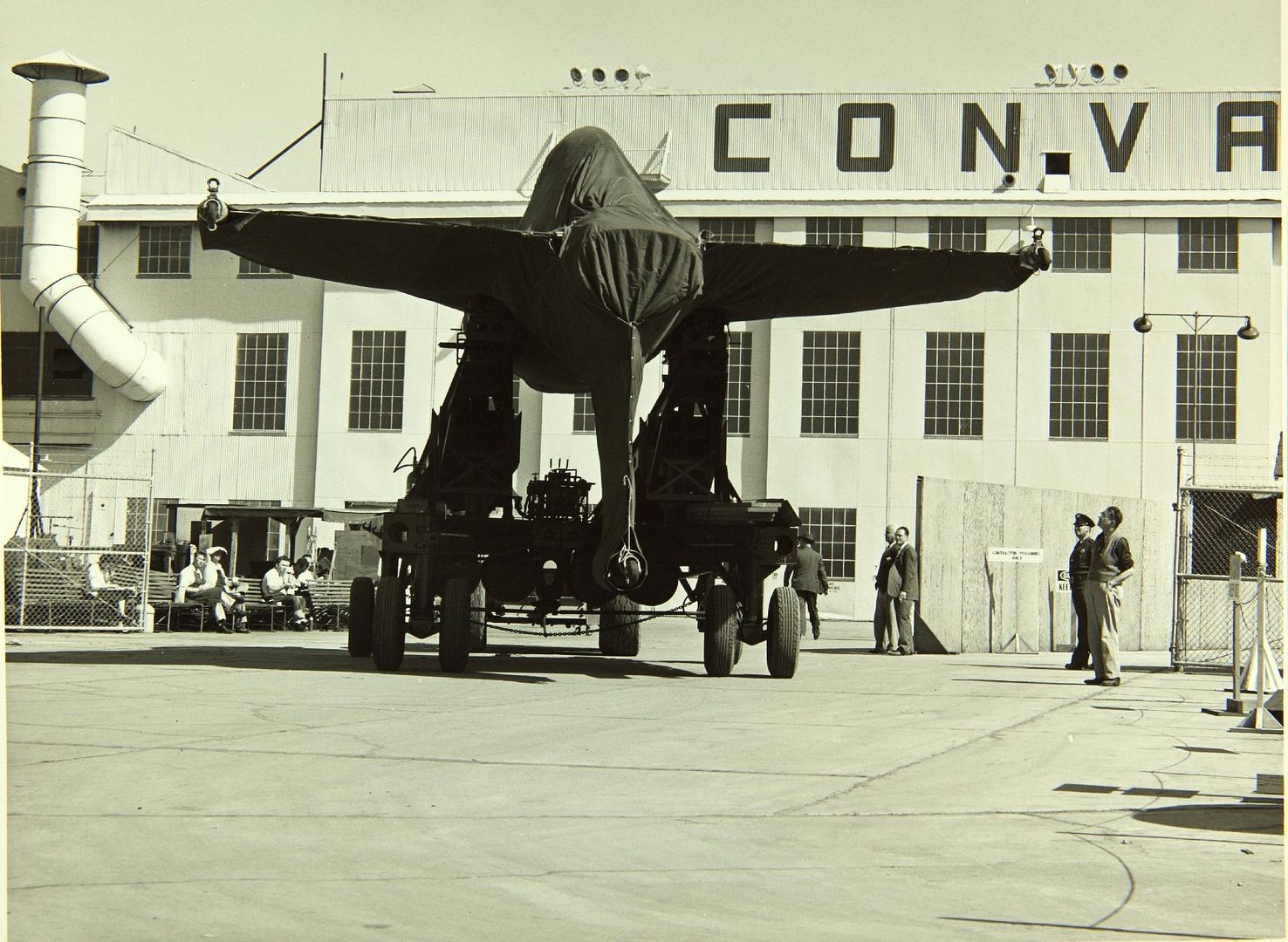
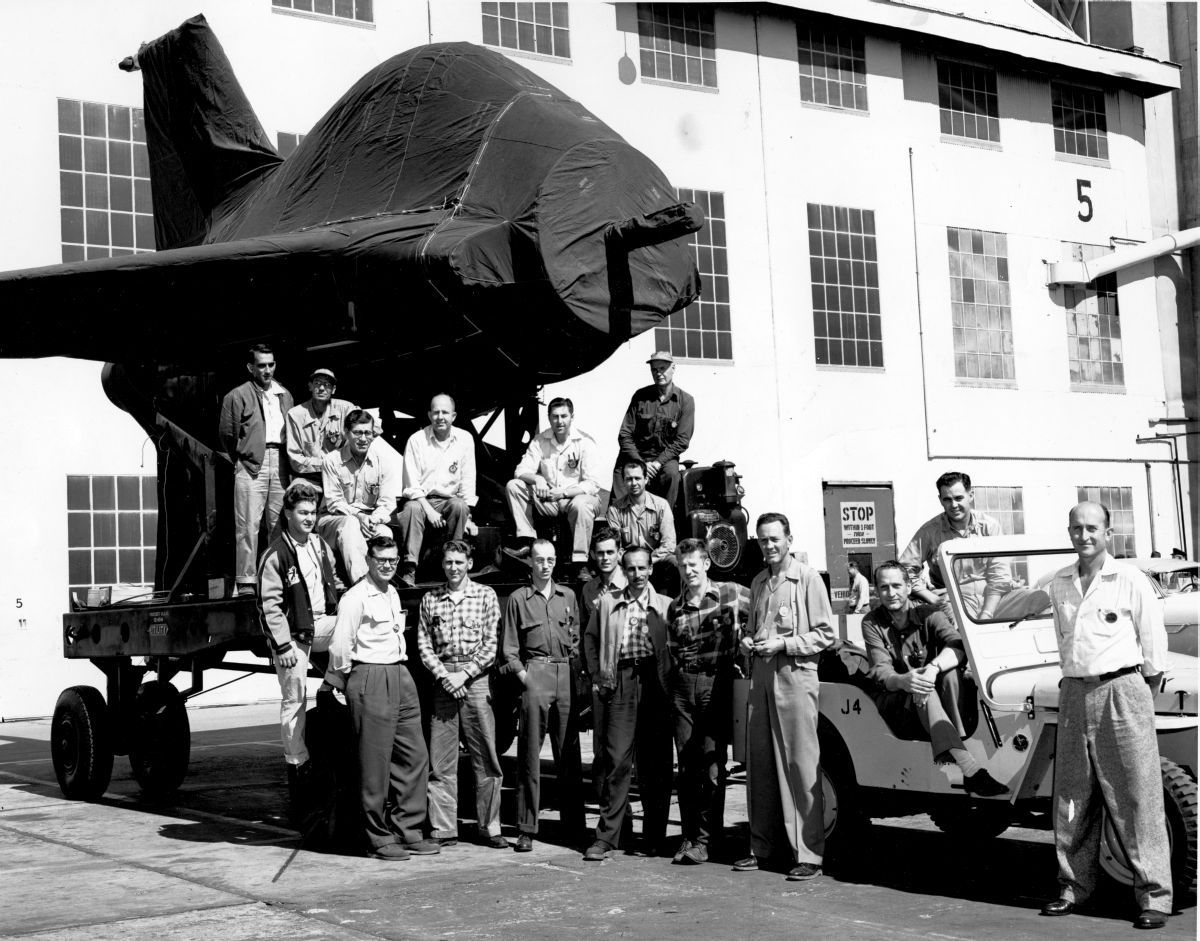
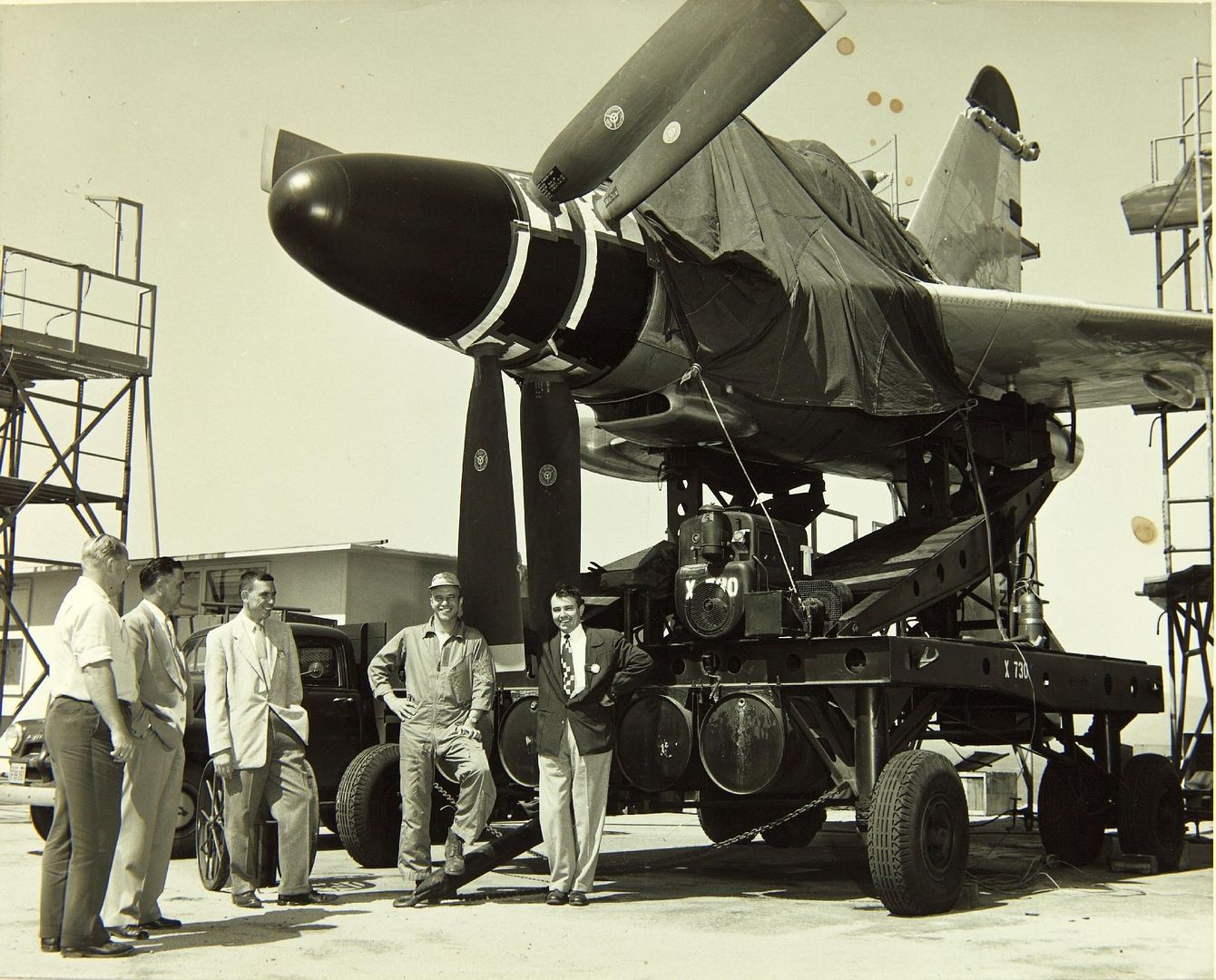
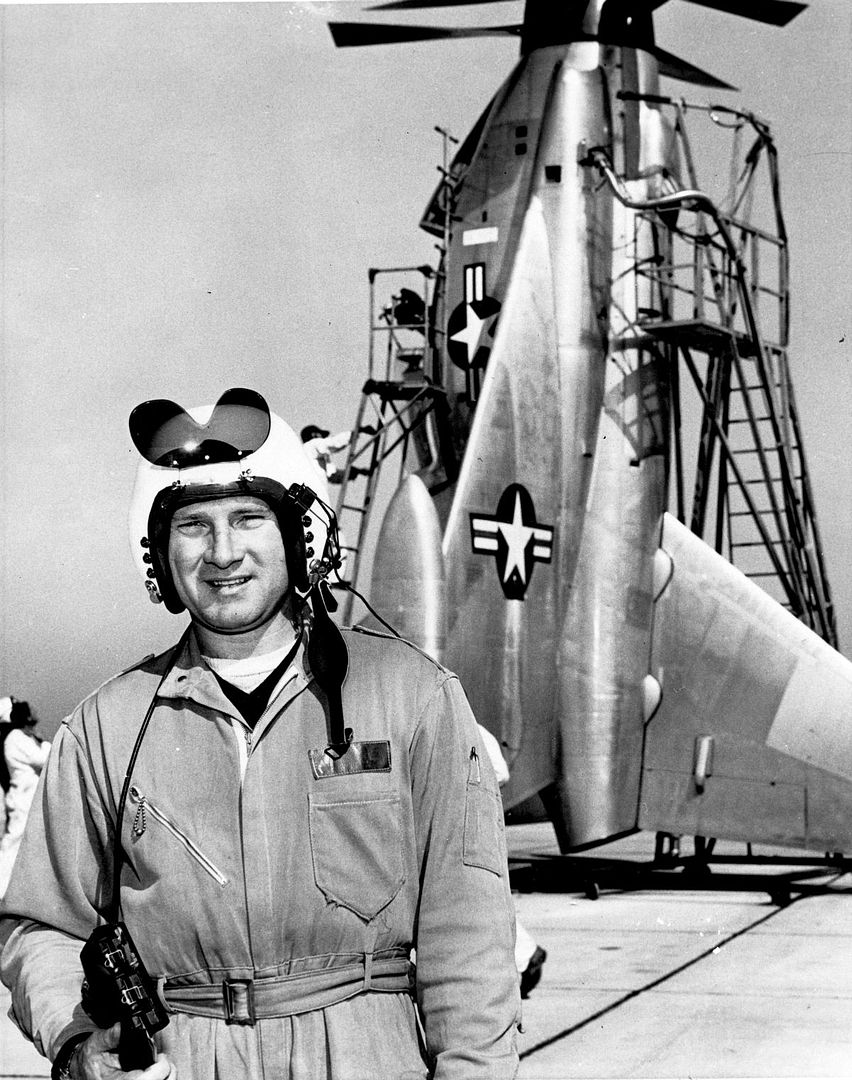
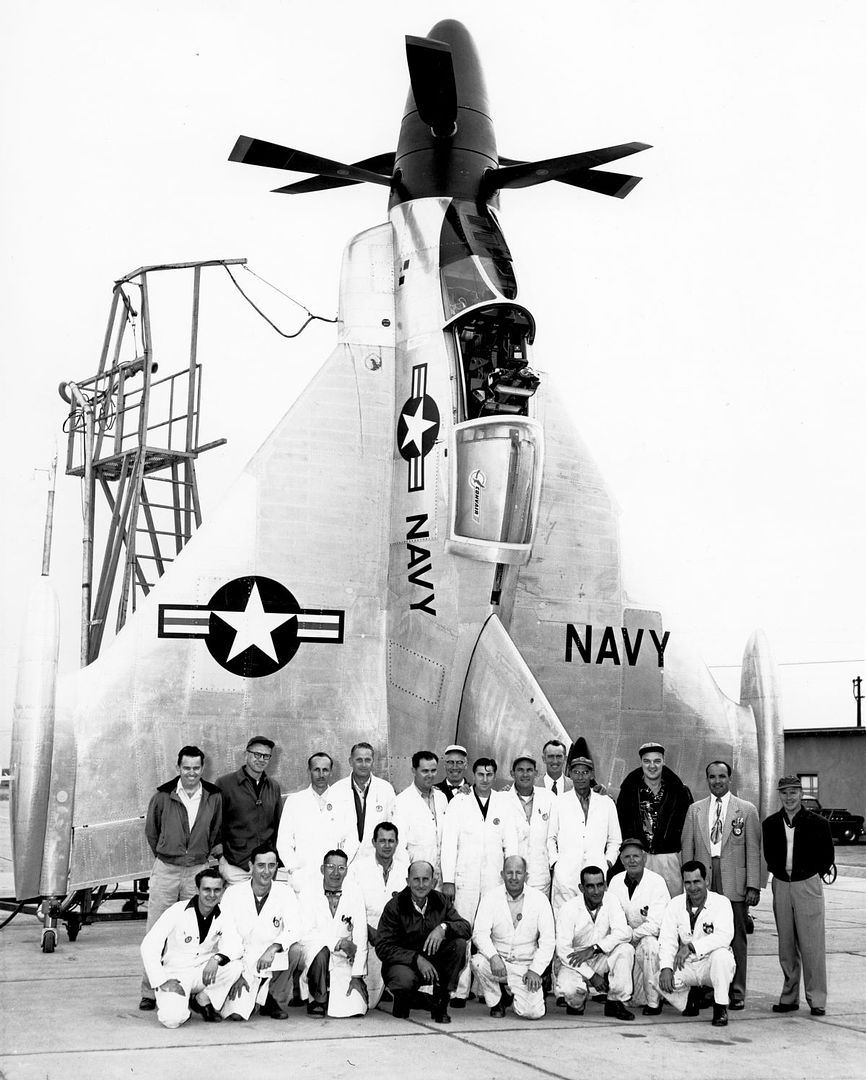
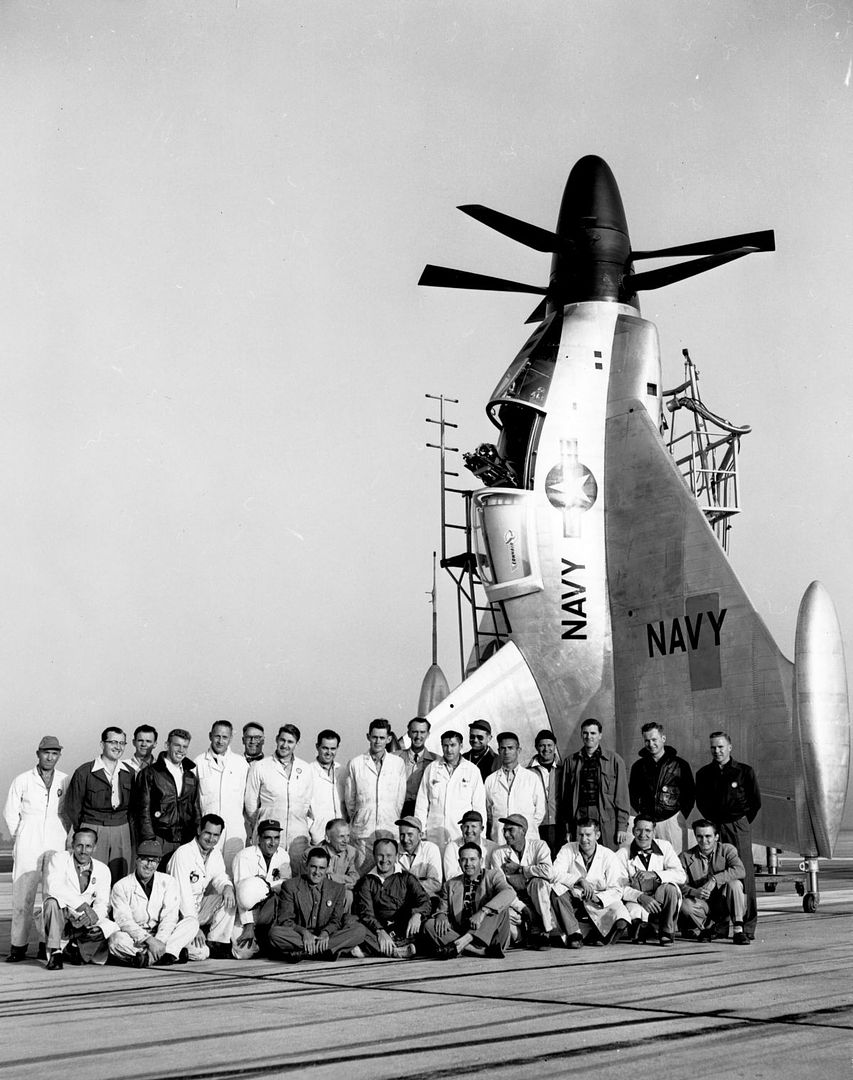
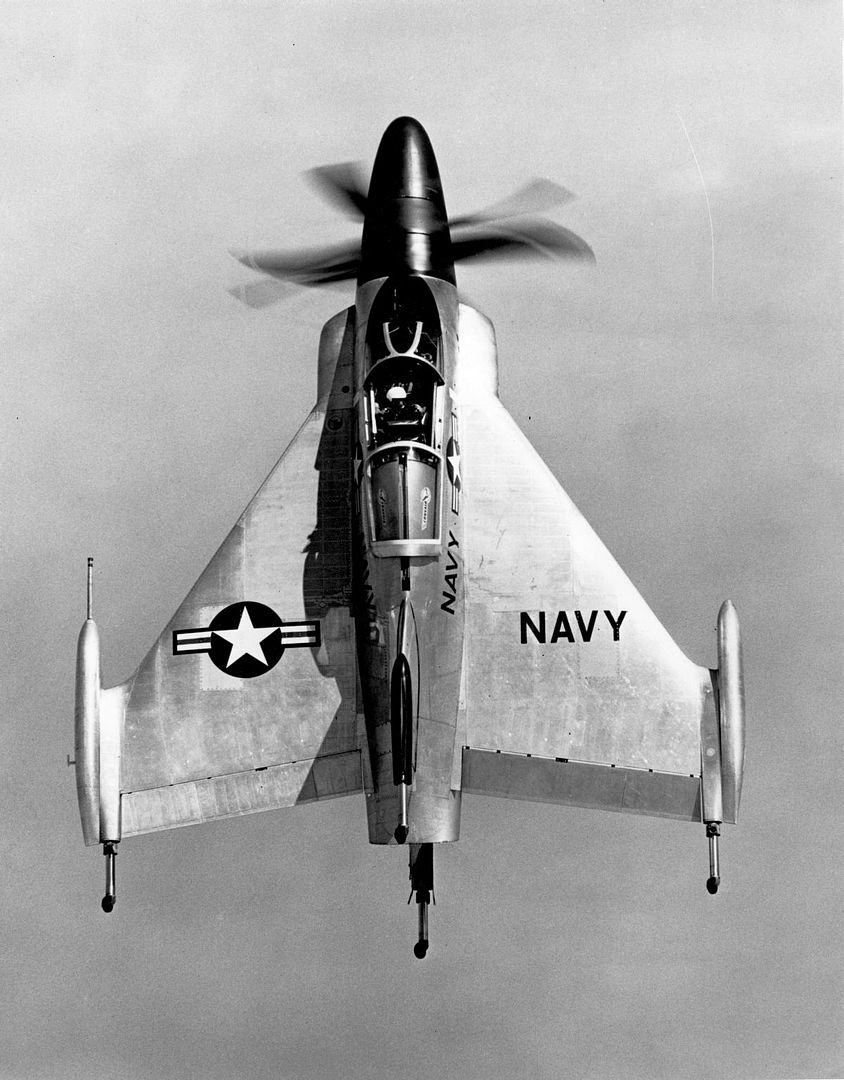
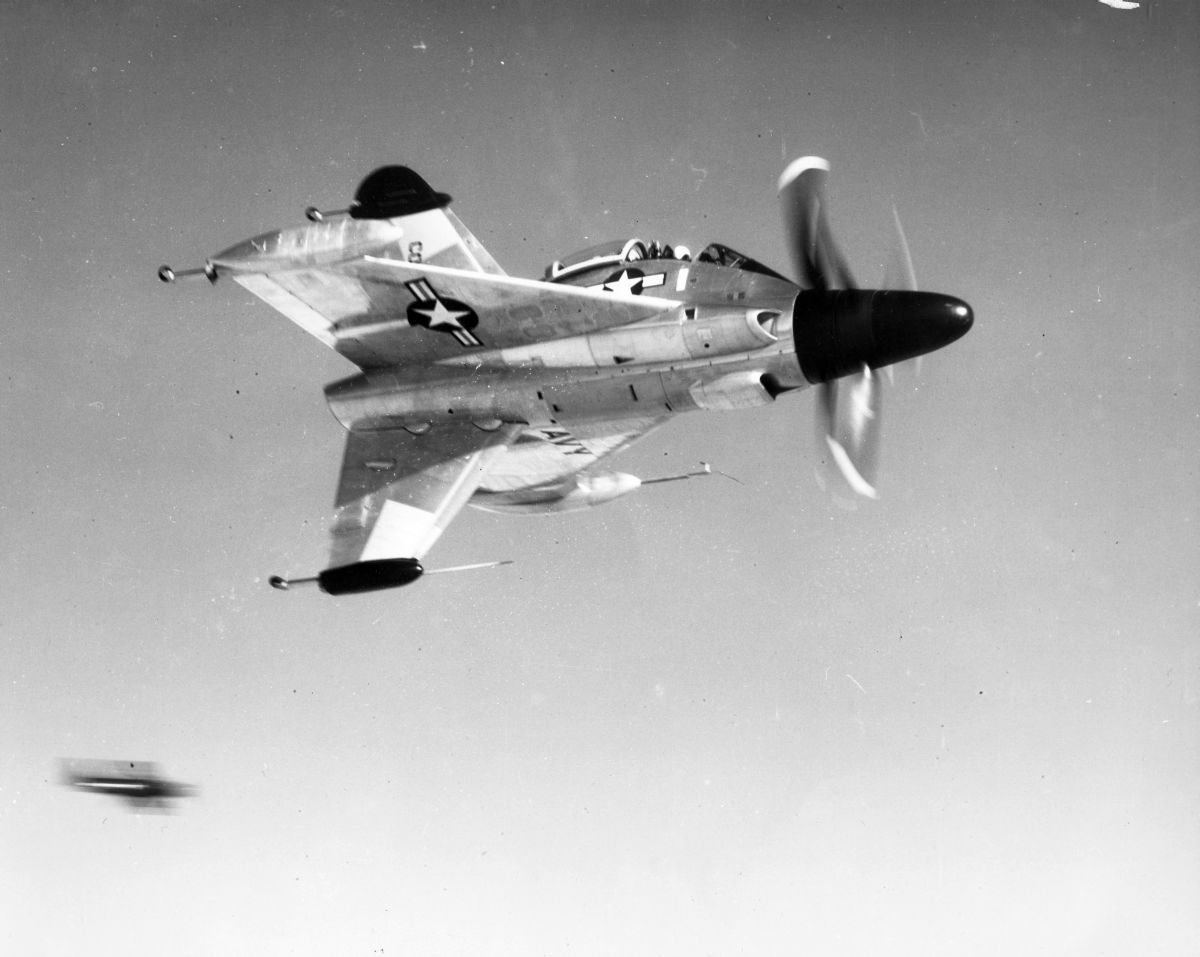
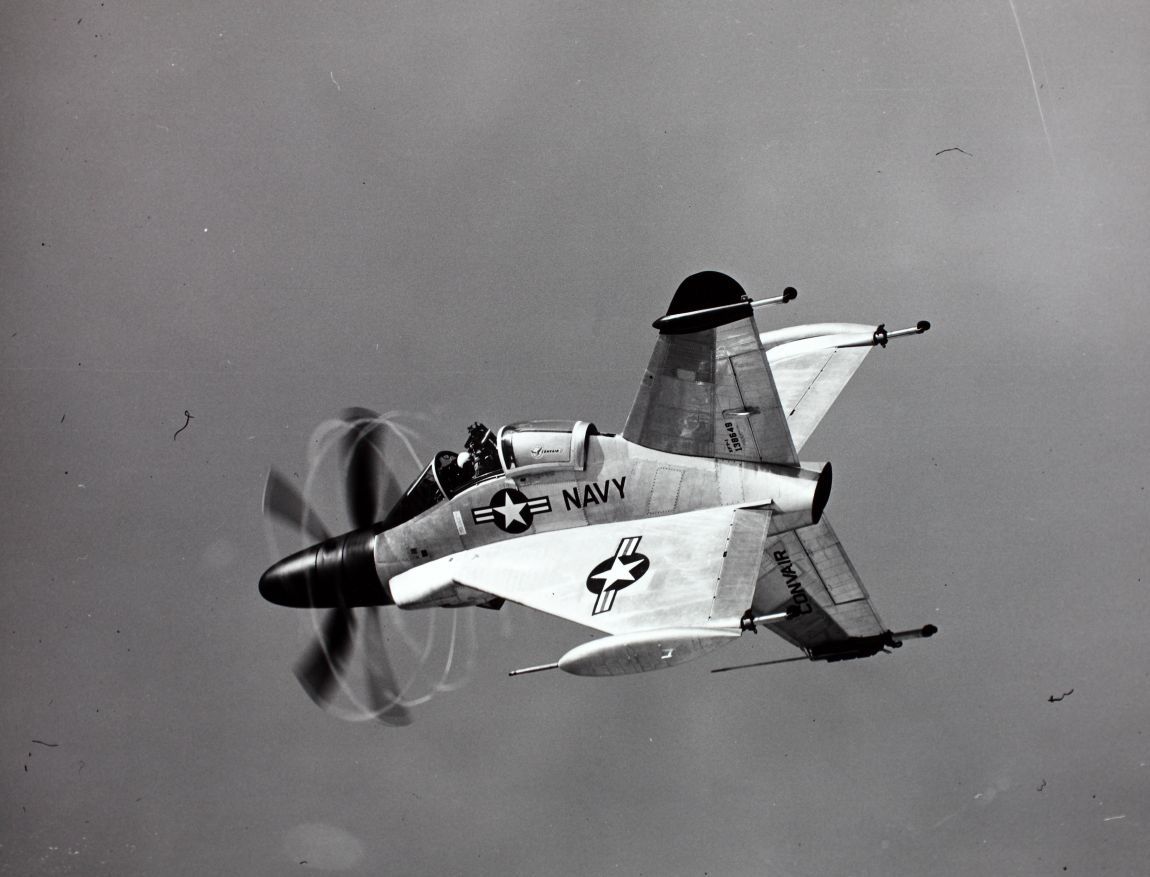
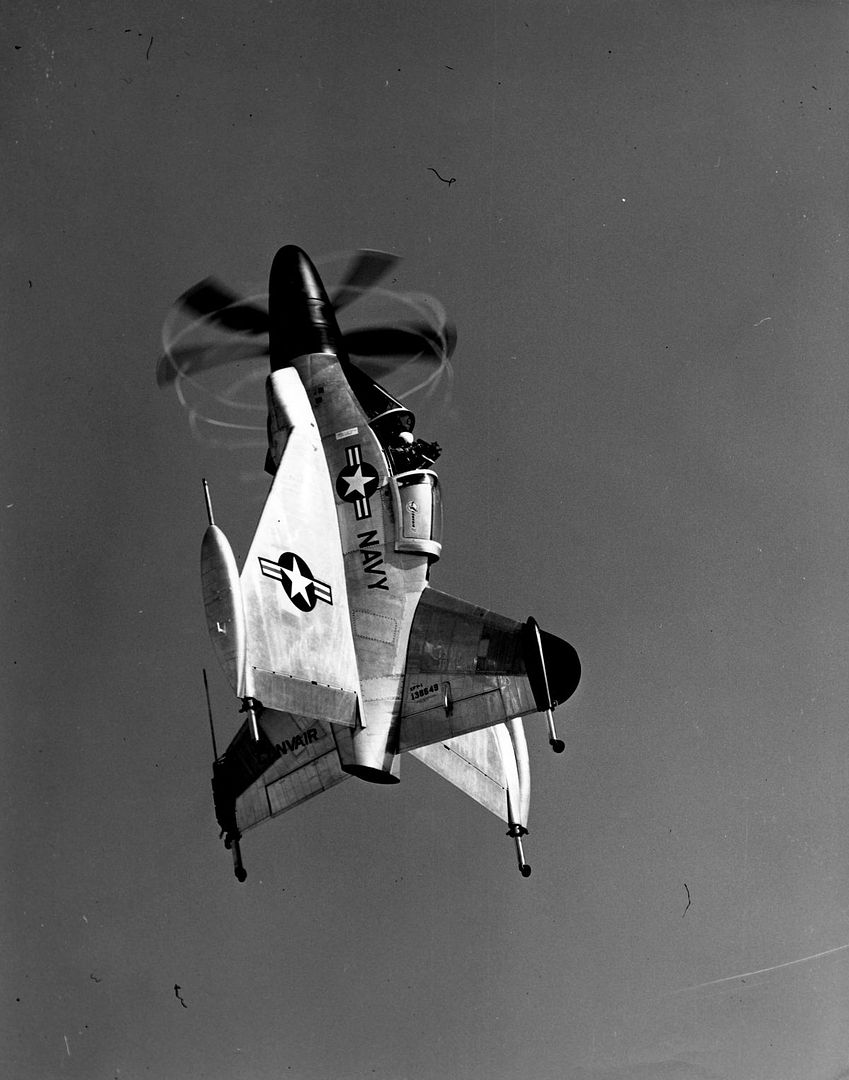
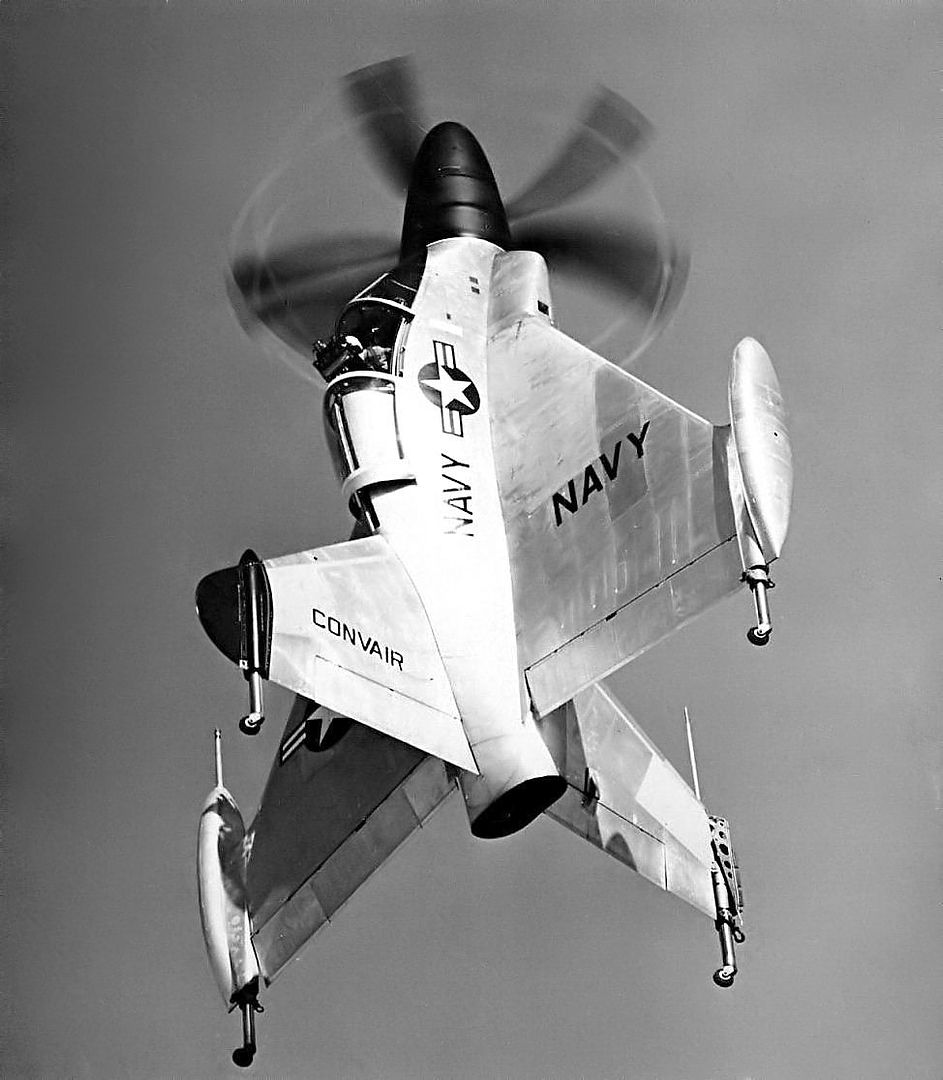
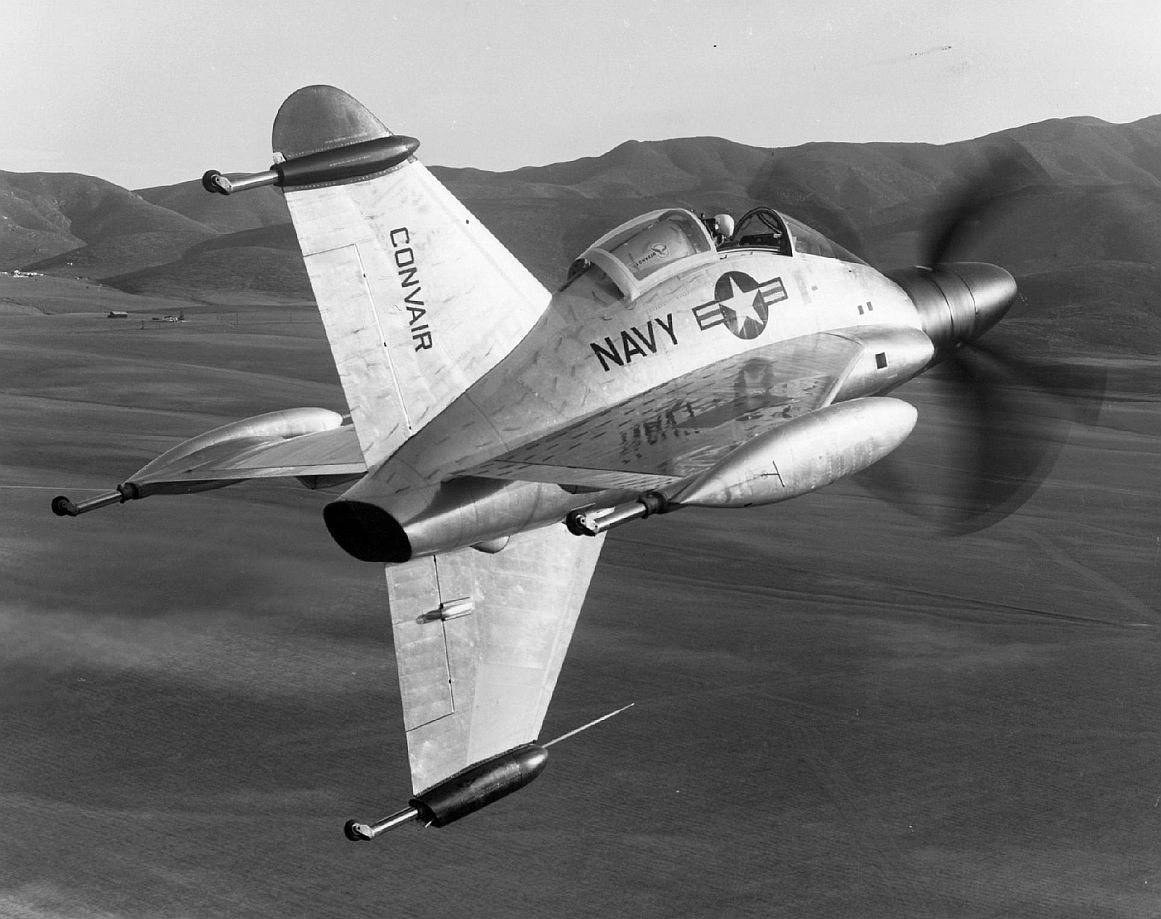
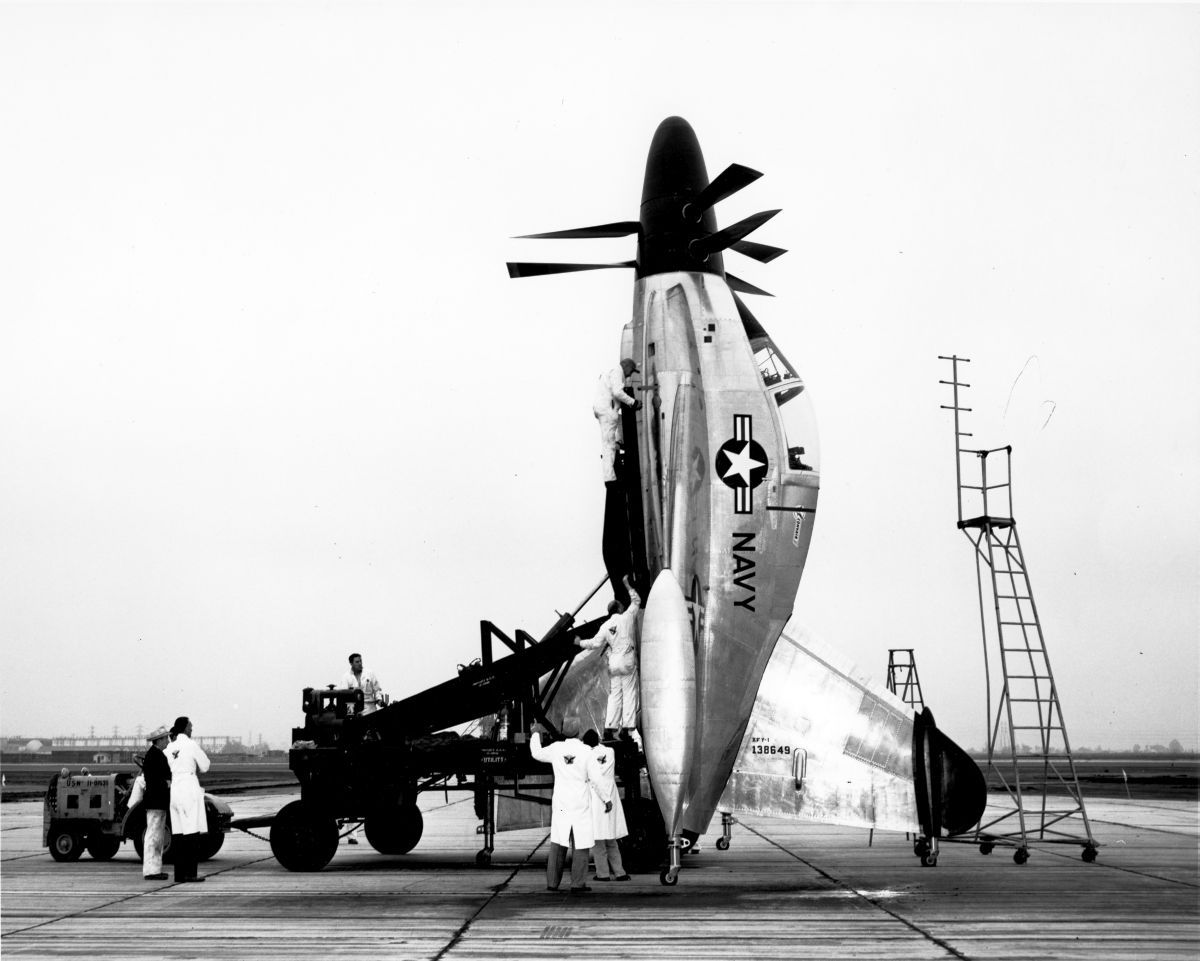
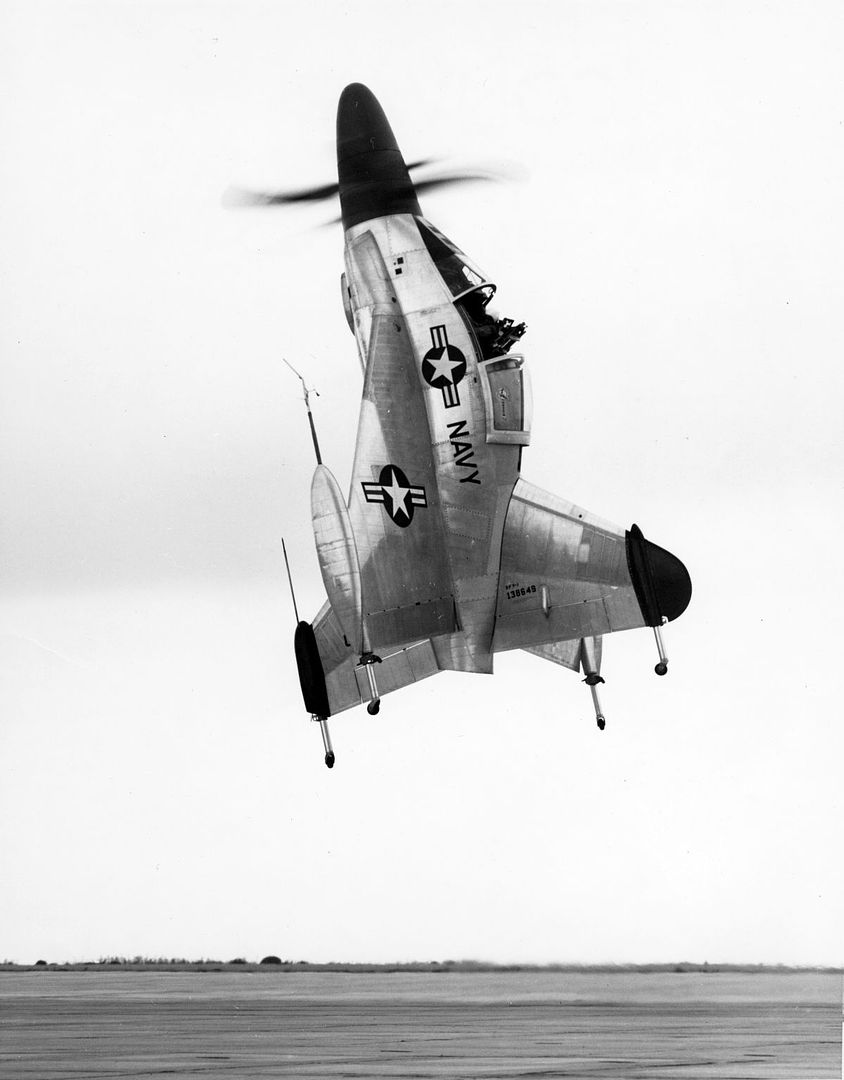

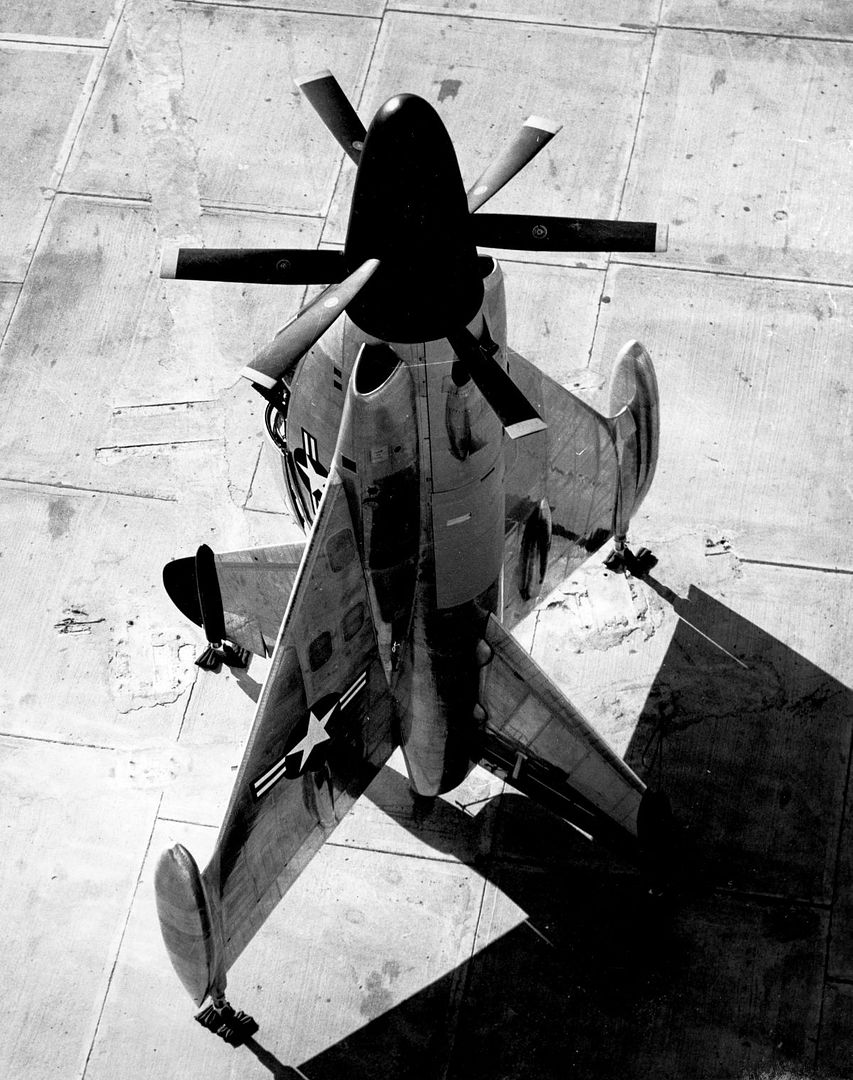
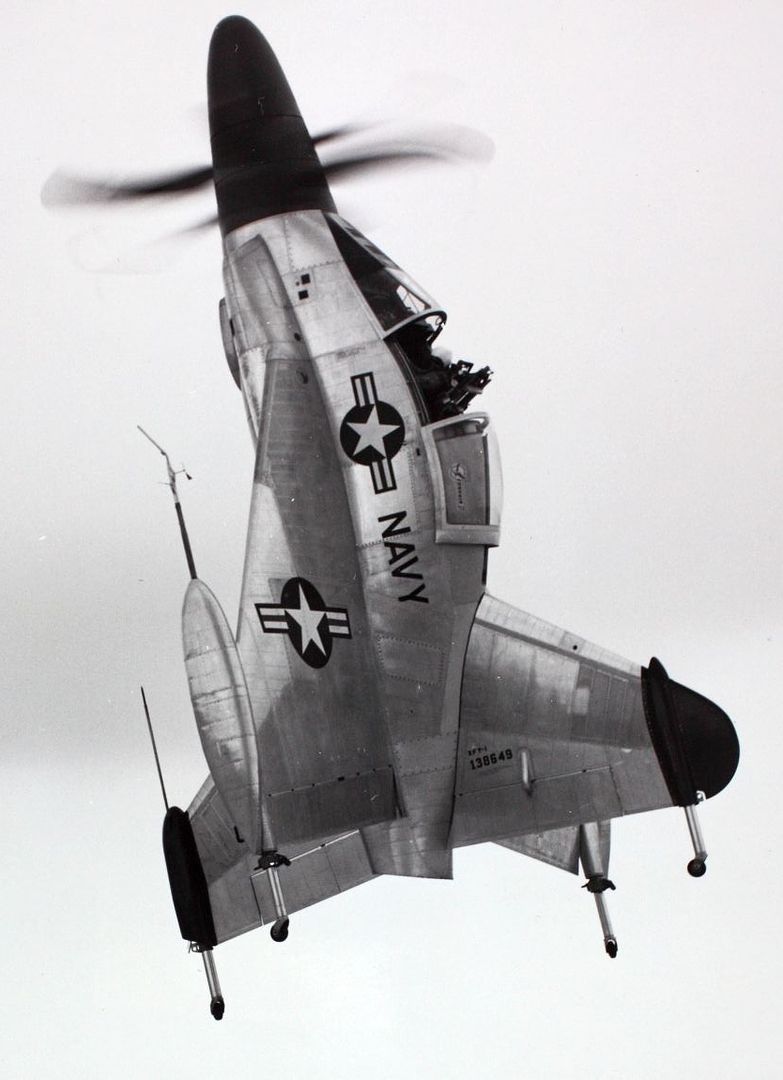
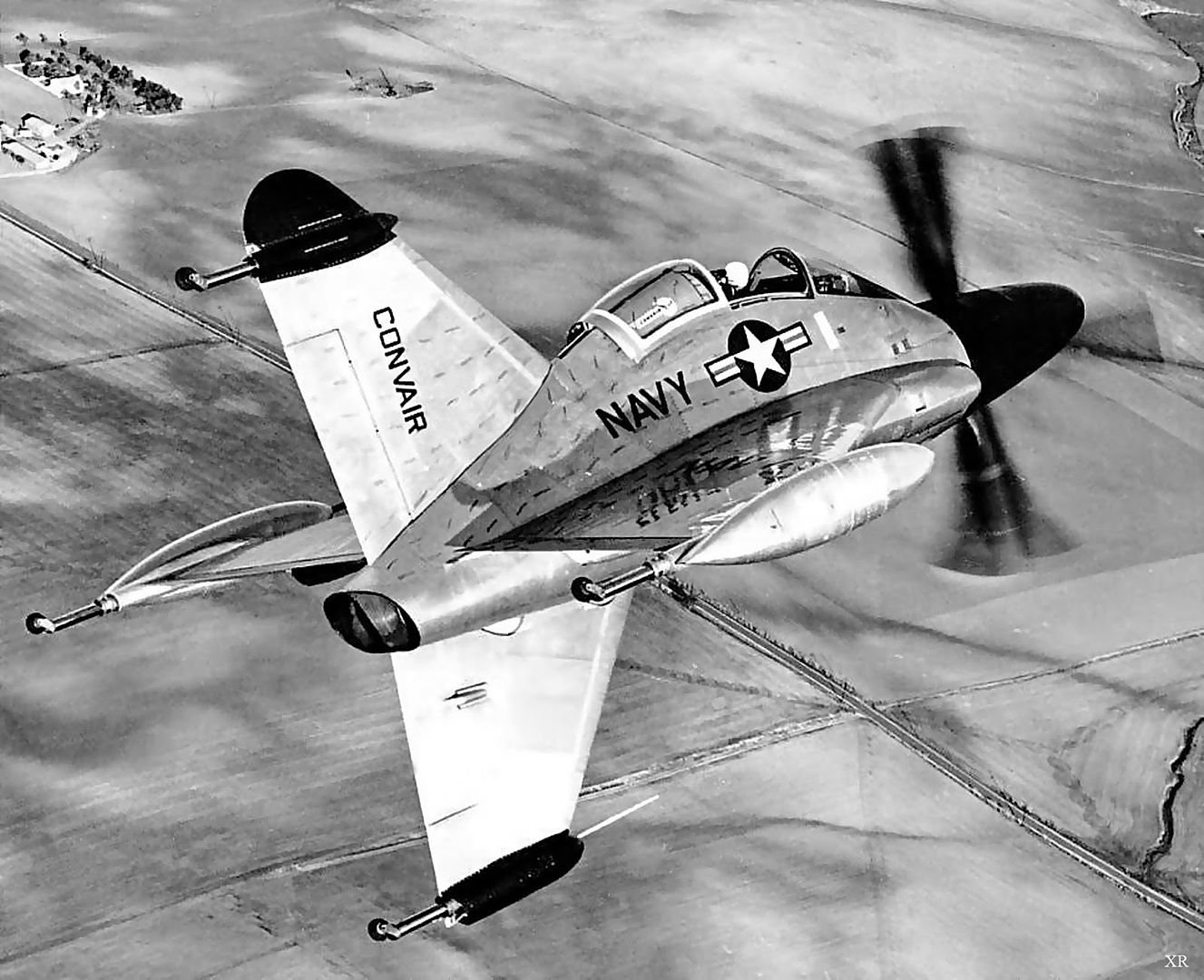
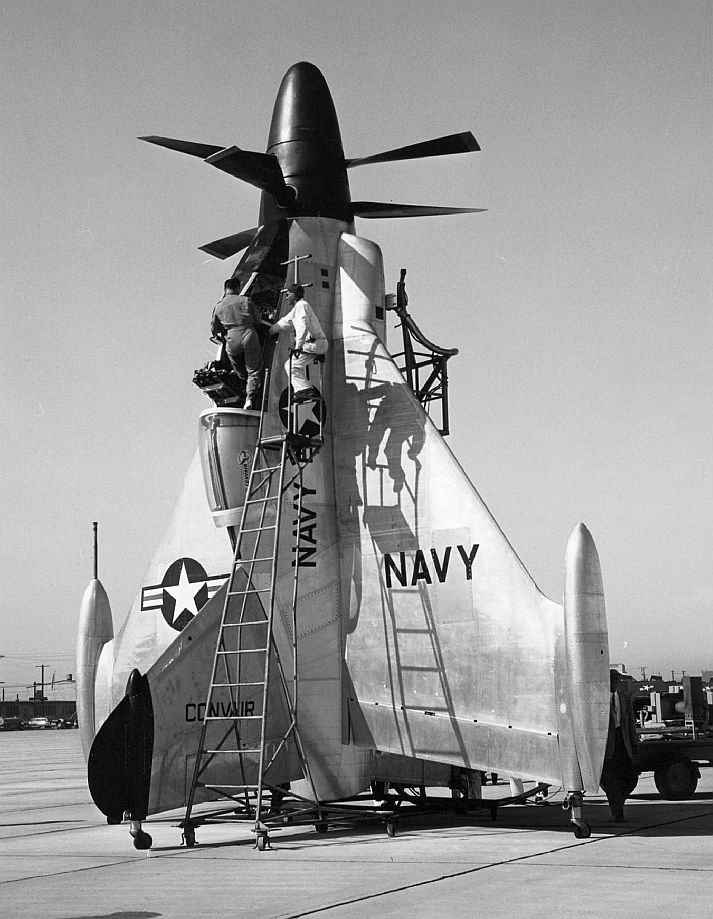
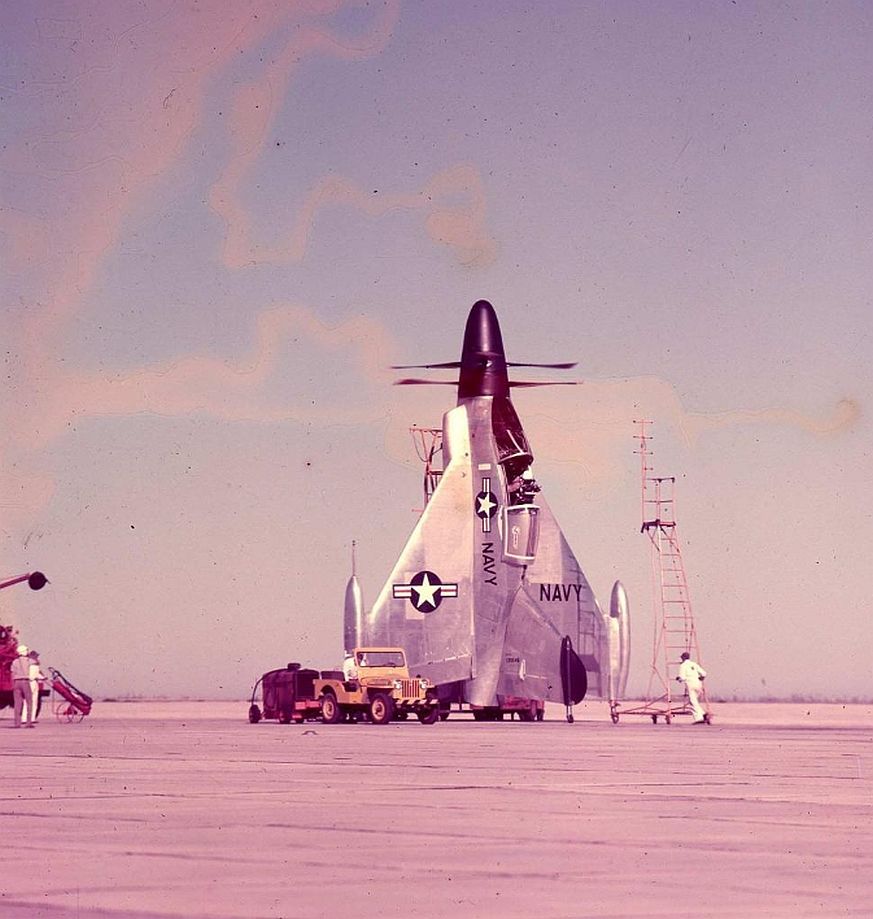

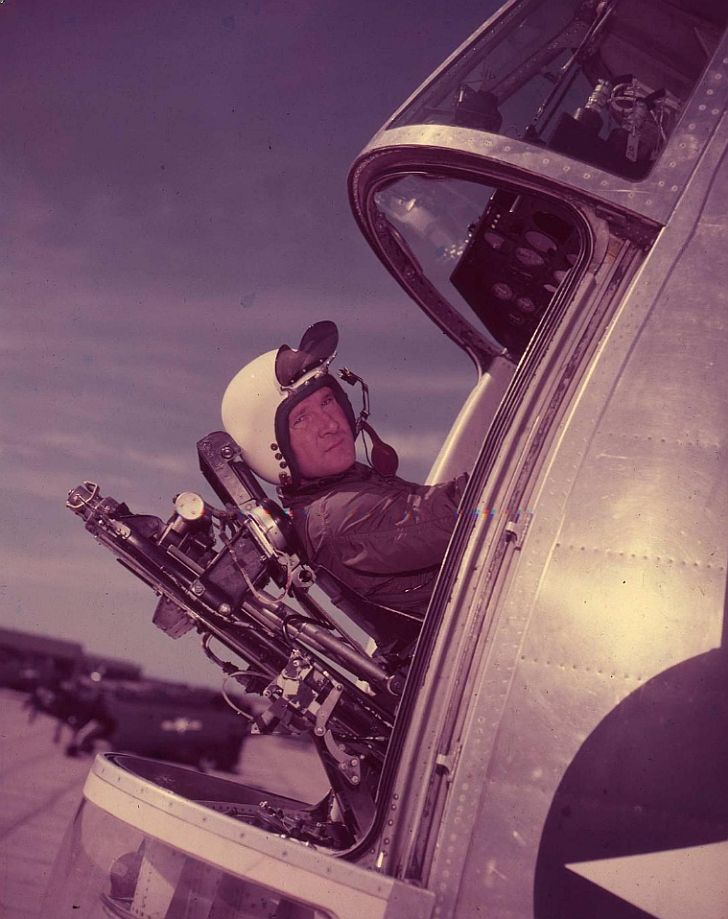
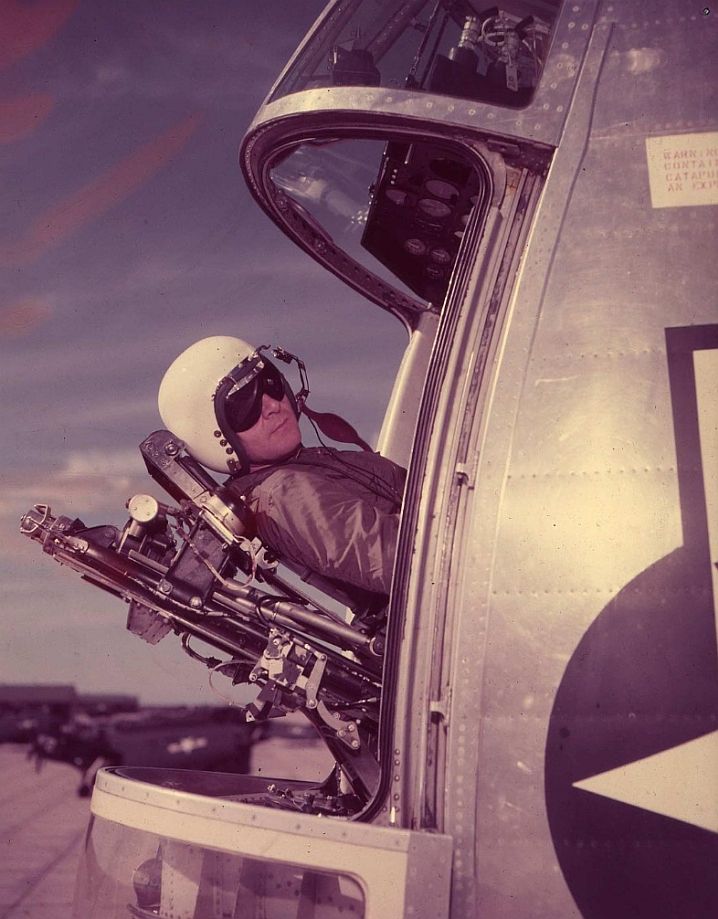
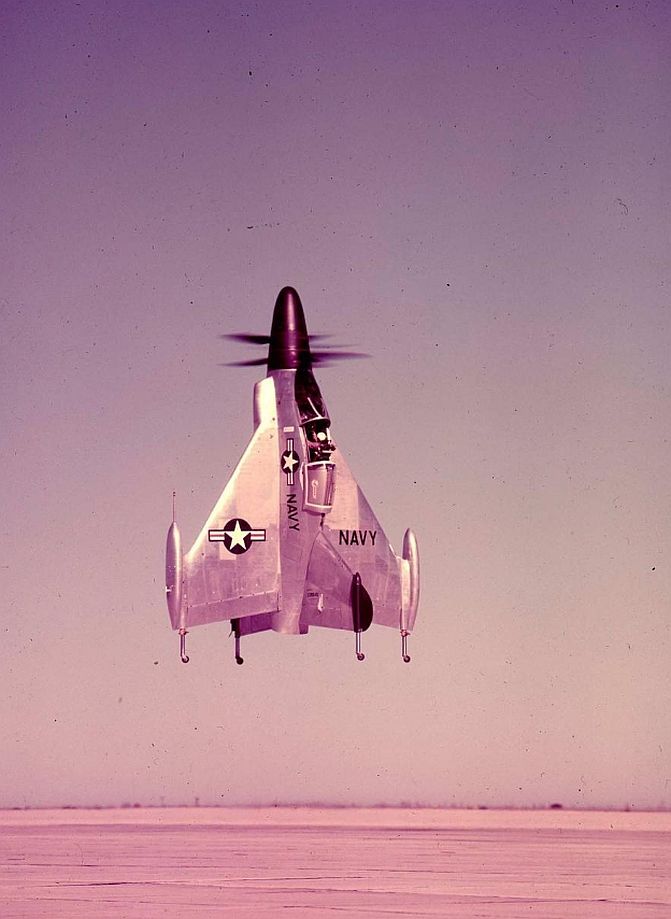
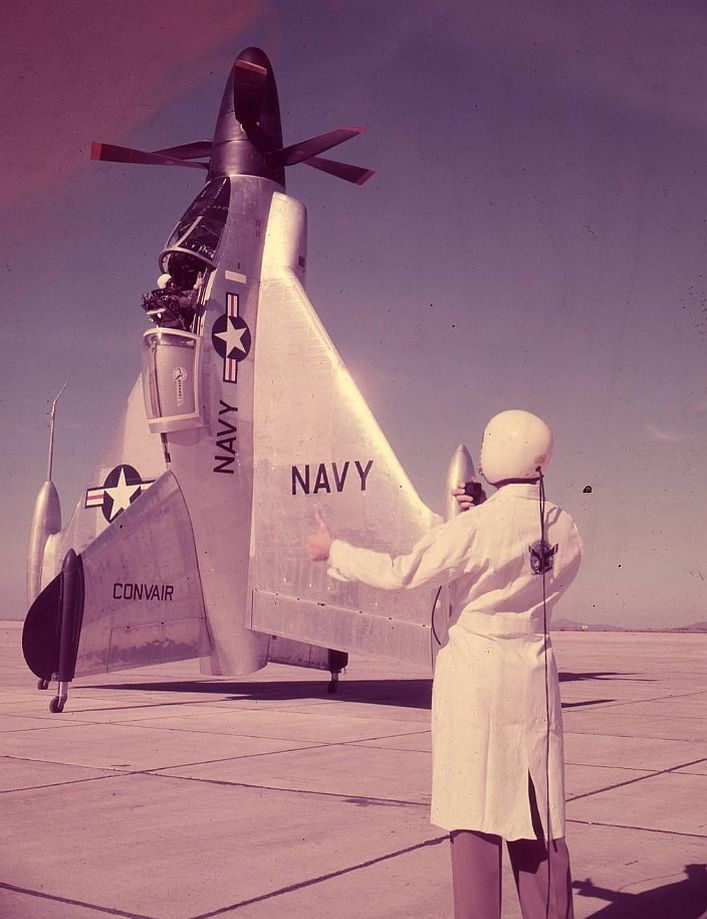
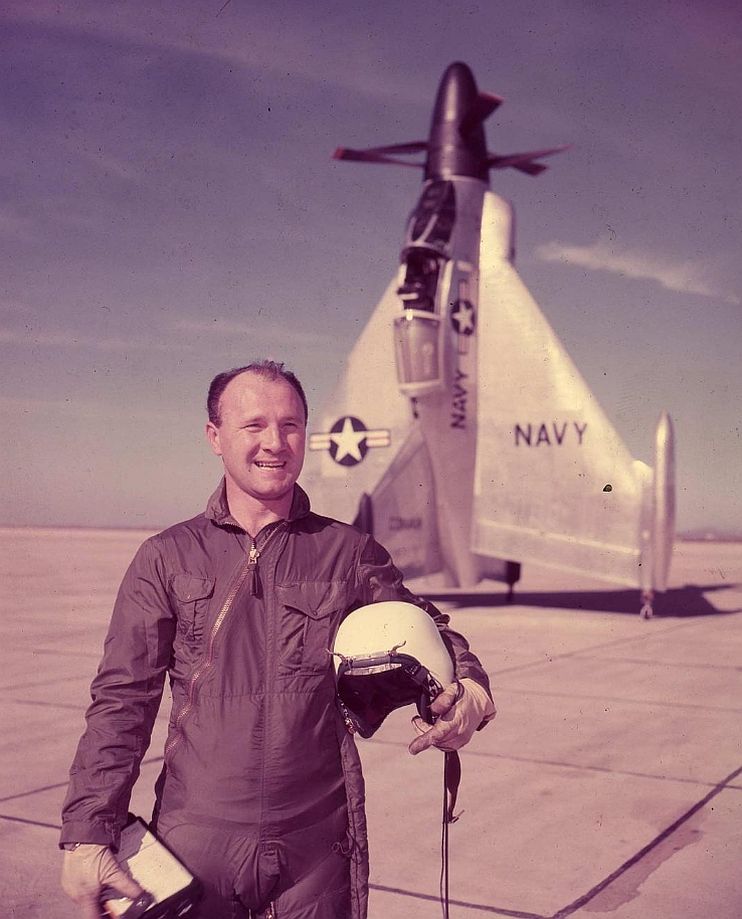
Regards Duggy
Post a reply
- Go to Previous topic
- Go to Next topic
- Go to Welcome
- Go to Introduce Yourself
- Go to General Discussion
- Go to Screenshots, Images and Videos
- Go to Off topic
- Go to Works in Progress
- Go to Skinning Tips / Tutorials
- Go to Skin Requests
- Go to IJAAF Library
- Go to Luftwaffe Library
- Go to RAF Library
- Go to USAAF / USN Library
- Go to Misc Library
- Go to The Ops Room
- Go to Made in Germany
- Go to Campaigns and Missions
- Go to Works in Progress
- Go to Juri's Air-Raid Shelter
- Go to Campaigns and Missions
- Go to Works in Progress
- Go to Skinpacks
- Go to External Projects Discussion
- Go to Books & Resources
